Analysis of Land Subsidence During Rapid Urbanization in Chongqing, China: Impacts of Metro Construction, Groundwater Dynamics, and Natural–Anthropogenic Environment Interactions
Highlights
- An urbanization intensity index was constructed using random forest classification combined with null importance-based feature selection to quantify the role of urbanization in subsidence processes.
- Using geographical detector combined with multiscale geographically weighted regression, the study fully quantifies the impacts of driving factors, showing that anthropogenic factors were the most prominent factors for land subsidence.
- Findings inform metro construction planning, groundwater monitoring, and land subsidence mitigation strategies in Chongqing and other mountainous urban areas.
- It is recommended that the government regulate the construction to operation timeline of metro projects. Shorter intervals between these phases should be avoided, as they are found to intensify land subsidence.
Abstract
1. Introduction
2. Study Area and Data
2.1. Overview of the Study Area
2.2. Data Collection and Pre-Processing
2.2.1. Sentinel-1 GRD Products and Sentinel-2 Data
2.2.2. Sentinel-1 Single Look Complex Products
2.2.3. The Metro Lines Data
2.2.4. The Groundwater Depth Data
2.2.5. Driving Factors Data
3. Methods
3.1. Urbanization Intensity Extraction
3.1.1. Machine Learning Classification Method of Land Cover
- (1)
- RF is an ensemble learning algorithm that generates numerous decision trees by randomly sampling data and feature sets, delivering accurate classification or regression outcomes through averaging or majority voting. This study implemented the RF classifier using the ‘randomForest’ R package (version 3.3.2) [67]. The optimal combination of ntree and mtry was identified through 10-fold cross-validation. In this study, parameter optimization tested mtry values from 1 to 10 with increments of 1 and ntree = 100, 200, 500, 1000. Experimental results indicated stable out-of-bag error rates at mtry = 3 and ntree = 500, establishing these as optimal parameters.
- (2)
- Support vector machine classifier is a non-parametric supervised machine learning algorithm that constructs an optimal hyperplane maximizing the margin between boundary samples to separate classes [68]. Implemented here using the radial basis function kernel for its reliability, the model required optimization of regularization cost (C) and kernel width (γ) parameters via R’s tune () function [69], yielding optimal parameters C = 23 and γ = 0.1 from test ranges C ∈ {2−2, 2−1, …, 28} and γ ∈ [0.1, 2.0], which were determined by performing 10-fold cross-validation to minimize model error.
- (3)
- Artificial neural network classifier offers a nonlinear computational approach modeled after biological nervous systems. In this study, hidden layer nodes were set equal in number to available spectral bands of Sentinel-2 [70]. Gradient descent served as the training algorithm for weight adjustment and loss function minimization. A corresponding number of output neurons was implemented for each land cover classification category.
- (4)
- The Maximum Likelihood Classification classifier is a commonly adopted algorithm in remote sensing applications, especially for land cover classification. Equation (1) shows the MLC algorithm [71]:
3.1.2. Feature Selection Method
- (1)
- Dual Polarization SAR Vegetation Index (DPSVI) [72] utilizes dual-polarized SAR imagery to assess and monitor vegetation structure, biomass, and canopy density. It is calculated as follows:
- (2)
- The Normalized Difference Vegetation Index (NDVI) [73] is used for evaluating and monitoring vegetation cover and biomass production through satellite imagery. It is calculated as follows:
- (3)
- The Normalized Difference Vegetation Index red-edge 1 (NDVIre1) [74] is used for assessing vegetation vigor and chlorophyll content by utilizing the red-edge 1 and near-infrared spectral bands from satellite imagery. It is calculated as follows:
- (4)
- The Soil Adjusted Vegetation Index (SAVI) [75] is used for evaluating vegetation cover while minimizing the influence of soil background by incorporating a soil adjustment factor into the vegetation index calculation. It is calculated as follows:
- (5)
- The Modified Normalized Difference Water Index (MNDWI) [76] is used for enhancing open water features and suppressing noise from built-up land, vegetation, and soil backgrounds through satellite imagery. It is calculated as follows:
- (6)
- The Bare Soil Index (BSI) [77] is used for identifying and monitoring bare soil areas by enhancing the spectral characteristics of soil while reducing the influence of vegetation and built-up features through satellite imagery. It is calculated as follows:
- (7)
- The Normalized Difference Built-up Index (NDBI) [78] is used for identifying and monitoring built-up areas and urban expansion through satellite imagery. It is calculated as follows:
3.1.3. Urbanization Intensity Index
3.2. SBAS-InSAR
3.3. Unification of Spatial Resolution
3.4. Geographical Detector Model
3.5. Multiscale Geographically Weighted Regression Model
3.6. Comparative Evaluation of SBAS-InSAR and PS-InSAR in Monitoring Land Subsidence
4. Results
4.1. Land Subsidence Under the Context of Urbanization
4.1.1. Assessment of Classification Accuracy for Land Cover Based on the Machine Learning Classifier
4.1.2. The RF Classifier Combined with the Null Importance Feature Selection Method to Extract ISA
4.1.3. Spatiotemporal Dynamics of Land Subsidence
4.1.4. The Relationship Between Urbanization Intensity and Land Subsidence
4.2. Land Subsidence and Its Relation with Metro Construction
4.3. Land Subsidence and Its Relation with Groundwater Dynamics
4.4. Relationship of Land Subsidence with Driving Factors in Chongqing
4.4.1. The Influence of Potential Driving Factors on Land Subsidence
4.4.2. Interactions Between Different Driving Factors
4.4.3. Spatial Pattern Analysis of Regression Coefficient
5. Discussion
5.1. Accuracy Verification of SBAS-InSAR in Monitoring Land Subsidence
5.2. Limitations and Future Work
6. Conclusions
Supplementary Materials
Author Contributions
Funding
Institutional Review Board Statement
Informed Consent Statement
Data Availability Statement
Acknowledgments
Conflicts of Interest
References
- United Nations. World Economic and Social Survey 2004; UN: New York, NY, USA, 2004. [Google Scholar]
- Shi, L.; Gong, H.; Chen, B.; Zhou, C. Land subsidence prediction induced by multiple factors using machine learning method. Remote Sens. 2020, 12, 4044. [Google Scholar] [CrossRef]
- Liu, F.; Zhang, Z.; Zhao, X.; Liu, B.; Wang, X.; Yi, L.; Zuo, L.; Xu, J.; Hu, S.; Sun, F. Urban expansion of China from the 1970s to 2020 based on remote sensing technology. Chin. Geogr. Sci. 2021, 31, 765–781. [Google Scholar] [CrossRef]
- Deuskar, C.; Baker, J.L.; Mason, D. East Asia’s Changing Urban Landscape: Measuring a Decade of Spatial Growth; World Bank Publications: Washington, DC, USA, 2015. [Google Scholar]
- Wen, H.; Huang, J.; Qian, L.; Li, Z.; Zhang, Y.; Zhang, J. The spatial-temporal evolution patterns of landslide-oriented resilience in mountainous city: A case study of Chongqing, China. J. Environ. Manag. 2024, 370, 122963. [Google Scholar] [CrossRef] [PubMed]
- Li, Y.; Gao, J.; Yin, J.; Liu, L.; Zhang, C.; Wu, S. Flood risk assessment of areas under urbanization in Chongqing, China, by integrating multi-Models. Remote Sens. 2024, 16, 219. [Google Scholar] [CrossRef]
- Zhang, J.; Tao, Y.; Kou, P.; Jin, Z.; Huang, Y.; Cui, J.; Liang, W.; Liu, R. Dual impacts of urbanization and precipitation on subsidence in Chongqing revealed by SBAS-InSAR. Environ. Earth Sci. 2025, 84, 204. [Google Scholar] [CrossRef]
- Xu, Y.S.; Ma, L.; Du, Y.J.; Shen, S.L. Analysis of urbanisation-induced land subsidence in Shanghai. Nat. Hazards 2012, 63, 1255–1267. [Google Scholar] [CrossRef]
- Yang, Q.; Ke, Y.; Zhang, D.; Chen, B.; Gong, H.; Lv, M.; Zhu, L.; Li, X. Multi-scale analysis of the relationship between land subsidence and buildings: A case study in an eastern Beijing Urban Area using the PS-InSAR technique. Remote Sens. 2018, 10, 1006. [Google Scholar] [CrossRef]
- Ohenhen, L.O.; Shirzaei, M. Land Subsidence Hazard and Building Collapse Risk in the Coastal City of Lagos, West Arica. Earths Future 2022, 10, e2022EF003219. [Google Scholar] [CrossRef]
- Haghshenas Haghighi, M.; Motagh, M. Uncovering the impacts of depleting aquifers: A remote sensing analysis of land subsidence in Iran. Sci. Adv. 2024, 10, eadk3039. [Google Scholar] [CrossRef] [PubMed]
- Ashraf, T.; Yin, F.; Liu, L.; Zhang, Q. Land Subsidence Detection Using SBAS-and Stacking-InSAR with Zonal Statistics and Topographic Correlations in Lakhra Coal Mines, Pakistan. Remote Sens. 2024, 16, 3815. [Google Scholar] [CrossRef]
- Ohenhen, L.O.; Zhai, G.; Lucy, J.; Werth, S.; Carlson, G.; Khorrami, M.; Onyike, F.; Sadhasivam, N.; Tiwari, A.; Ghobadi-Far, K.; et al. Land subsidence risk to infrastructure in US metropolises. Nat. Cities 2025, 2, 543–554. [Google Scholar] [CrossRef]
- Zeng, J.; Dai, Z.; Luo, X.; Jiao, W.; Yang, Z.; Li, Z.; Zhang, N.; Xiong, Q. Deformation and Failure Mechanism of Bedding Rock Landslides Based on Stability Analysis and Kinematics Characteristics: A Case Study of the Xing’an Village Landslide, Chongqing. Water 2025, 17, 767. [Google Scholar] [CrossRef]
- She, X.; Li, D.; Yang, S.; Xie, X.; Sun, Y.; Zhao, W. Landslide hazard assessment for Wanzhou considering the correlation of rainfall and surface deformation. Remote Sens. 2024, 16, 1587. [Google Scholar] [CrossRef]
- Peng, J.; Sun, X.; Wang, W.; Sun, G. Characteristics of land subsidence, earth fissures and related disaster chain effects with respect to urban hazards in Xi’an, China. Environ. Earth Sci. 2016, 75, 1190. [Google Scholar] [CrossRef]
- Jung, H.C.; Kim, S.W.; Jung, H.S.; Min, K.D.; Won, J.S. Satellite observation of coal mining subsidence by persistent scatterer analysis. Eng. Geol. 2007, 92, 1–13. [Google Scholar] [CrossRef]
- Montenbruck, O.; Steigenberger, P.; Prange, L.; Deng, Z.; Zhao, Q.; Perosanz, F.; Romero, I.; Noll, C.; Stürze, A.; Weber, G. The Multi-GNSS Experiment (MGEX) of the International GNSS Service (IGS)—Achievements, prospects and challenges. Adv. Space Res. 2017, 59, 1671–1697. [Google Scholar] [CrossRef]
- Hu, B.; Chen, J.; Zhang, X. Monitoring the land subsidence area in a coastal urban area with InSAR and GNSS. Sensors 2019, 19, 3181. [Google Scholar] [CrossRef] [PubMed]
- Chaussard, E.; Amelung, F.; Abidin, H.; Hong, S.H. Sinking cities in Indonesia: ALOS PALSAR detects rapid subsidence due to groundwater and gas extraction. Remote Sens. Environ. 2013, 128, 150–161. [Google Scholar] [CrossRef]
- Wang, B.; Zhao, C.; Zhang, Q.; Peng, M. Sequential InSAR time series deformation monitoring of land subsidence and rebound in Xi’an, China. Remote Sens. 2019, 11, 2854. [Google Scholar] [CrossRef]
- Du, Y.; Feng, G.; Liu, L.; Fu, H.; Peng, X.; Wen, D. Understanding land subsidence along the coastal areas of Guangdong, China, by analyzing multi-track MTInSAR data. Remote Sens. 2020, 12, 299. [Google Scholar] [CrossRef]
- Mohamadi, B.; Balz, T.; Younes, A. A model for complex subsidence causality interpretation based on PS-InSAR cross-heading orbits analysis. Remote Sens. 2019, 11, 2014. [Google Scholar] [CrossRef]
- Lin, C.H.; Liu, D.; Liu, G. Landslide detection in La Paz City (Bolivia) based on time series analysis of InSAR data. Int. J. Remote Sens. 2019, 40, 6775–6795. [Google Scholar]
- Mohamadi, B.; Balz, T.; Younes, A.J. Towards a PS-InSAR based prediction model for building collapse: Spatiotemporal patterns of vertical surface motion in collapsed building areas—Case study of Alexandria, Egypt. Remote Sens. 2020, 12, 3307. [Google Scholar] [CrossRef]
- Mohamadi, B.; Abu Ghazala, M.O.; Li, H.; Al-Sabbagh, T.A.; Younes, A. Integrating InSAR Coherence and Air Pollution Detection Satellites to Study the Impact of War on Air Quality. Int. J. Appl. Earth Obs. Geoinf. 2025, 142, 104687. [Google Scholar] [CrossRef]
- Gabriel, A.K.; Goldstein, R.M. Crossed orbit interferometry: Theory and experimental results from SIR-B. Int. J. Remote Sens. 1988, 9, 857–872. [Google Scholar] [CrossRef]
- Cigna, F.; Banks, V.J.; Donald, A.W.; Donohue, S.; Graham, C.; Hughes, D.; McKinley, J.M.; Parker, K. Mapping ground instability in areas of geotechnical infrastructure using satellite InSAR and Small UAV surveying: A case study in Northern Ireland. Geosciences 2017, 7, 51. [Google Scholar] [CrossRef]
- Hooper, A. A multi-temporal InSAR method incorporating both persistent scatterer and small baseline approaches. Geophys. Res. Lett. 2008, 35, L16302. [Google Scholar] [CrossRef]
- Yang, Z.; Li, Z.; Zhu, J.; Wang, Y.; Wu, L. Use of SAR/InSAR in Mining Deformation Monitoring, Parameter Inversion, and Forward Predictions: A Review. IEEE Geosci. Remote Sens. Mag. 2020, 8, 71–90. [Google Scholar] [CrossRef]
- Khan, J.; Ren, X.; Hussain, M.A.; Jan, M.Q. Monitoring land subsidence using PS-InSAR technique in Rawalpindi and Islamabad, Pakistan. Remote Sens. 2022, 14, 3722. [Google Scholar] [CrossRef]
- Foroughnia, F.; Nemati, S.; Maghsoudi, Y.; Perissin, D. An iterative PS-InSAR method for the analysis of large spatio-temporal baseline data stacks for land subsidence estimation. Int. J. Appl. Earth Obs. Geoinf. 2019, 74, 248–258. [Google Scholar] [CrossRef]
- Berardino, P.; Fornaro, G.; Lanari, R.; Sansosti, E. A new algorithm for surface deformation monitoring based on small baseline differential SAR interferograms. IEEE Trans. Geosci. Remote Sens. 2003, 40, 2375–2383. [Google Scholar] [CrossRef]
- Zhang, Z.; Hu, C.; Wu, Z.; Zhang, Z.; Yang, S.; Yang, W. Monitoring and analysis of ground subsidence in Shanghai based on PS-InSAR and SBAS-InSAR technologies. Sci. Rep. 2023, 13, 8031. [Google Scholar] [CrossRef]
- Dong, S.; Samsonov, S.; Yin, H.; Huang, L. Two-dimensional ground deformation monitoring in Shanghai based on SBAS and MSBAS InSAR methods. J. Earth Sci. 2018, 29, 960–968. [Google Scholar] [CrossRef]
- Zhou, L.; Guo, J.; Hu, J.; Li, J.; Xu, Y.; Pan, Y.; Shi, M. Wuhan surface subsidence analysis in 2015–2016 based on Sentinel-1A data by SBAS-InSAR. Remote Sens. 2017, 9, 982. [Google Scholar] [CrossRef]
- Sun, H.; Peng, H.; Zeng, M.; Wang, S.; Pan, Y.; Pi, P.; Xue, Z.; Zhao, X.; Zhang, A.; Liu, F. Land subsidence in a coastal city based on SBAS-InSAR monitoring: A case study of Zhuhai, China. Remote Sens. 2023, 15, 2424. [Google Scholar] [CrossRef]
- Wang, Z.; Lu, C. Urban land expansion and its driving factors of mountain cities in China during 1990–2015. J. Geogr. Sci. 2018, 28, 1152–1166. [Google Scholar] [CrossRef]
- Jiang, L.; Fan, Z.; Gao, Y.; Su, X.; Rashidov, J. Optimization of temperature prediction algorithms and simulation of future neighborhood-scale thermal environments in Chongqing. Build. Environ. 2024, 266, 112146. [Google Scholar] [CrossRef]
- Amitrano, D.; Guida, R.; Ruello, G. Multitemporal SAR RGB Processing for Sentinel-1 GRD Products: Methodology and Applications. IEEE J. Sel. Top. Appl. Earth Obs. Remote Sens. 2019, 12, 1497–1507. [Google Scholar] [CrossRef]
- Sajjad, M.M.; Wang, J.; Afzal, Z.; Hussain, S.; Siddique, A.; Khan, R.; Ali, M.; Iqbal, J. Assessing the impacts of groundwater depletion and aquifer degradation on land subsidence in Lahore, Pakistan: A PS-InSAR approach for sustainable urban development. Remote Sens. 2023, 15, 5418. [Google Scholar] [CrossRef]
- Li, D.; Hou, X.; Song, Y.; Zhang, Y.; Wang, C. Ground subsidence analysis in Tianjin (China) based on Sentinel-1A data using MT-InSAR methods. Appl. Sci. 2020, 10, 5514. [Google Scholar] [CrossRef]
- Yu, X.; Wang, G.; Hu, X.; Liu, Y.; Bao, Y. Land subsidence in Tianjin, China: Before and after the south-to-north water diversion. Remote Sens. 2023, 15, 1647. [Google Scholar] [CrossRef]
- Chen, Z.; Yu, B.; Yang, C.; Zhou, Y.; Qian, X.; Wang, C.; Wu, B.; Wu, J. An extended time-series (2000–2018) of global NPP-VIIRS-like nighttime light data from a cross-sensor calibration. Earth Syst. Sci. Data 2021, 13, 889–906. [Google Scholar] [CrossRef]
- Shi, K.; Wu, Y.; Liu, S.; Chen, Z.; Huang, C.; Cui, Y. Mapping and evaluating global urban entities (2000–2020): A novel perspective to delineate urban entities based on consistent nighttime light data. GISci. Remote Sens. 2023, 60, 2161199. [Google Scholar] [CrossRef]
- Luo, P.; Zhang, X.; Cheng, J.; Sun, Q. Modeling population density using a new index derived from multi-sensor image data. Remote Sens. 2019, 11, 2620. [Google Scholar] [CrossRef]
- Jiang, S.; Zhang, Z.; Ren, H.; Wei, G.; Xu, M.; Liu, B. Spatiotemporal characteristics of urban land expansion and population growth in Africa from 2001 to 2019: Evidence from population density data. ISPRS Int. J. Geo-Inf. 2021, 10, 584. [Google Scholar] [CrossRef]
- Zhang, Y.; Li, X.; Wang, A.; Bao, T.; Tian, S. Density and diversity of OpenStreetMap road networks in China. J. Urban Manag. 2015, 4, 135–146. [Google Scholar] [CrossRef]
- Liu, B.; Shi, Y.; Li, D.J.; Wang, Y.D.; Fernandez, G.; Tsou, M.H. An economic development evaluation based on the OpenStreetMap road network density: The case study of 85 cities in China. ISPRS Int. J. Geo-Inf. 2020, 9, 517. [Google Scholar] [CrossRef]
- Su, Y.; Guo, Q. A practical method for SRTM DEM correction over vegetated mountain areas. ISPRS J. Photogramm. Remote Sens. 2014, 87, 216–228. [Google Scholar] [CrossRef]
- Szabó, G.; Singh, S.K.; Szabó, S. Slope angle and aspect as influencing factors on the accuracy of the SRTM and the ASTER GDEM databases. Phys. Chem. Earth 2015, 83, 137–145. [Google Scholar] [CrossRef]
- Lin, J.; Chen, W.; Qi, X.; Hou, H. Risk assessment and its influencing factors analysis of geological hazards in typical mountain environment. J. Clean. Prod. 2021, 309, 127077. [Google Scholar] [CrossRef]
- Wu, Z.H.; Zhou, C.J.; Huang, X.L. Main active faults and seismic activity along the Yangtze River Economic Belt: Based on remote sensing geological survey. China Geol. 2020, 3, 314–338. [Google Scholar] [CrossRef]
- Peng, S.; Ding, Y.; Liu, W.; Li, Z. 1 km monthly temperature and precipitation dataset for China from 1901 to 2017. Earth Syst. Sci. 2019, 11, 1931–1946. [Google Scholar] [CrossRef]
- Pan, X.; Guo, X.; Li, X.; Niu, X.; Yang, X.; Feng, M.; Che, T.; Jin, R.; Ran, Y.; Guo, J.; et al. National Tibetan Plateau Data Center: Promoting earth system science on the third pole. Bull. Am. Meteorol. Soc. 2021, 102, E2062–E2078. [Google Scholar] [CrossRef]
- Hamlet, S.; Salathé, E.; Carrasco, P. Statistical Downscaling Techniques for Global Climate Model Simulations of Temperature and Precipitation with Application to Water Resources Planning Studies; Climate Impacts Group, Center for Science in the Earth System, Joint Institute for the Study of the Atmosphere and Ocean, University of Washington: Seattle, WA, USA, 2010. [Google Scholar]
- Miah, M.D.; Ali, M.K.; Miah, M.R.; Hasnat, G.T. Changes in Land Use and Land Cover, Normalized Difference Vegetation Index and Land Surface Temperature in the Narsingdi District During 2001 to 2021. J. Sci. Technol. Res. 2023, 5, 93–118. [Google Scholar] [CrossRef]
- He, Y.; Ye, B.; He, J.; Wang, H.; Zhou, W. Long Time-Series Monitoring and Drivers of Eco-Quality in the Upper-Middle Fen River Basin of the Eastern Loess Plateau: An Analysis Based on a Remote Sensing Ecological Index and Google Earth Engine. Land 2024, 13, 2239. [Google Scholar] [CrossRef]
- Chen, J.; Chen, S.; Yang, C.; He, L.; Hou, M.; Shi, T. A comparative study of impervious surface extraction using Sentinel-2 imagery. Eur. J. Remote Sens. 2020, 53, 274–292. [Google Scholar] [CrossRef]
- Chen, J.; Yang, K.; Chen, S.; Yang, C.; Zhang, S.; He, L. Enhanced normalized difference index for impervious surface area estimation at the plateau basin scale. J. Appl. Remote Sens. 2019, 13, 016502. [Google Scholar] [CrossRef]
- Schellekens, J.; Brolsma, R.J.; Dahm, R.J.; Donchyts, G.V.; Winsemius, H. Rapid setup of hydrological and hydraulic models using OpenStreetMap and the SRTM derived digital elevation model. Environ. Model. Softw. 2014, 61, 98–105. [Google Scholar] [CrossRef]
- Sjöström, M.; Ardö, J.; Arneth, A.; Boulain, N.; Cappelaere, B.; Eklundh, L.; De Grandcourt, A.; Kutsch, W.L.; Merbold, L.; Nouvellon, Y.; et al. Exploring the potential of MODIS EVI for modeling gross primary production across African ecosystems. Remote Sens. Environ. 2011, 115, 1081–1089. [Google Scholar] [CrossRef]
- Kouadio, L.; Newlands, N.K.; Davidson, A.; Zhang, Y.; Chipanshi, A. Assessing the performance of MODIS NDVI and EVI for seasonal crop yield forecasting at the ecodistrict scale. Remote Sens. 2014, 6, 10193–10214. [Google Scholar] [CrossRef]
- Talukdar, S.; Singha, P.; Mahato, S.; Pal, S.; Liou, Y.-A.; Rahman, A. Land-use land-cover classification by machine learning classifiers for satellite observations—A review. Remote Sens. 2020, 12, 1135. [Google Scholar] [CrossRef]
- Rana, V.K.; Suryanarayana, T.M.V. Performance evaluation of MLE, RF and SVM classification algorithms for watershed scale land use/land cover mapping using sentinel 2 bands. Remote Sens. Appl. Soc. Environ. 2020, 19, 100351. [Google Scholar] [CrossRef]
- Kasahun, M.; Legesse, A. Machine learning for urban land use/cover mapping: Comparison of artificial neural network, random forest and support vector machine, a case study of Dilla town. Heliyon 2024, 10, e39146. [Google Scholar] [CrossRef] [PubMed]
- Liaw, A.; Wiener, M. Classification and Regression by Randomforest. R News 2002, 2, 18–22. [Google Scholar]
- Mountrakis, G.; Im, J.; Ogole, C. Support vector machines in remote sensing: A review. ISPRS J. Photogramm. Remote Sens. 2011, 66, 247–259. [Google Scholar] [CrossRef]
- Yousefi, S.; Mirzaee, S.; Almohamad, H.; Al Dughairi, A.A.; Gomez, C.; Siamian, N.; Alrasheedi, M.; Abdo, H.G. Image classification and land cover mapping using sentinel-2 imagery: Optimization of SVM parameters. Land 2022, 11, 993. [Google Scholar] [CrossRef]
- Ghayour, L.; Neshat, A.; Paryani, S.; Shahabi, H.; Shirzadi, A.; Chen, W.; Al-Ansari, N.; Geertsema, M.; Pourmehdi Amiri, M.; Gholamnia, M. Performance Evaluation of Sentinel-2 and Landsat 8 OLI Data for Land Cover/Use Classification Using a Comparison Between Machine Learning Algorithms. Remote Sens. 2021, 13, 1349. [Google Scholar] [CrossRef]
- Khurana, Y.; Gupta, S. LCLU Classification using SVM, MLC and ANN of multispectral imagery from Sentinel-2. Int. J. Eng. Res. Technol. (IJERT) 2022, 11, 1–8. [Google Scholar]
- dos Santos, E.P.; da Silva, D.D.; do Amaral, C.H. Vegetation Cover Monitoring in Tropical Regions Using SAR-C Dual-Polarization Index: Seasonal and Spatial Influences. Int. J. Remote Sens. 2021, 42, 7581–7609. [Google Scholar] [CrossRef]
- Huang, S.; Tang, L.; Hupy, J.P.; Wang, Y.; Shao, G. A commentary review on the use of normalized difference vegetation index (NDVI) in the era of popular remote sensing. J. For. Res. 2021, 32, 2719. [Google Scholar] [CrossRef]
- Fernández-Manso, A.; Fernández-Manso, O.; Quintano, C. SENTINEL-2A red-edge spectral indices suitability for discriminating burn severity. Int. J. Appl. Earth Obs. Geoinf. 2016, 50, 170–175. [Google Scholar] [CrossRef]
- Rhyma, P.P.; Norizah, K.; Hamdan, O.; Faridah-Hanum, I.; Zulfa, A.W. Integration of Normalised Different Vegetation Index and Soil-Adjusted Vegetation Index for Mangrove Vegetation delineation. Remote Sens. Appl. Soc. Environ. 2020, 17, 100280. [Google Scholar] [CrossRef]
- Li, W.; Du, Z.; Ling, F.; Zhou, D.; Wang, H.; Gui, Y.; Sun, B.; Zhang, X. A comparison of land surface water mapping using the Normalised Difference Index from TM, ETM+ and ALI. Remote Sens. 2013, 5, 5530–5549. [Google Scholar] [CrossRef]
- Nguyen, C.; Chidthaisong, A.; Diem, P.; Huo, L. A Modified Bare Soil Index to Identify Bare Land Features during Agricultural Fallow-Period in Southeast Asia Using Landsat 8. Land 2021, 10, 231. [Google Scholar] [CrossRef]
- Zha, Y.; Gao, J.; Ni, S. Use of normalized difference built-up index in automatically mapping urban areas from TM imagery. Int. J. Remote Sens. 2003, 24, 583–594. [Google Scholar] [CrossRef]
- Haralick, R.M. Statistical and structural approaches to texture. Proc. IEEE 1979, 67, 768–804. [Google Scholar] [CrossRef]
- Kimura, S.; Oda, D.; Tokuhisa, M. Feature Selection using Modified Null Importance. In Proceedings of the 2021 IEEE Sympo-sium Series on Computational Intelligence (SSCI), Orlando, FL, USA, 5–7 December 2021; pp. 1–7. [Google Scholar]
- Zhang, Y.; Li, X. Feature selection based on Null Importance for Fault Diagnosis of Chiller. In Proceedings of the 2023 35th Chinese Control and Decision Conference (CCDC), Yichang, China, 20–22 May 2023; pp. 4155–4161. [Google Scholar]
- Chen, J.; Yi, J.; Chen, A.; Jin, Z. EFCOMFF-Net: A multiscale feature fusion architecture with enhanced feature correlation for remote sensing image scene classification. IEEE Trans. Geosci. Remote Sens. 2023, 61, 5604917. [Google Scholar] [CrossRef]
- Han, Y.; Liu, G.; Liu, J.; Yang, J.; Xie, X.; Yan, W.; Zhang, W. Monitoring and analysis of land subsidence in Jiaozuo city (China) based on SBAS-InSAR technology. Sustainability 2023, 15, 11737. [Google Scholar] [CrossRef]
- Cai, Z.; Wen, C.; Bao, L.; Ma, H.; Yan, Z.; Li, J.; Gao, X.; Yu, L. Fine-Scale Grassland Classification Using UAV-Based Multi-Sensor Image Fusion and Deep Learning. Remote Sens. 2025, 17, 3190. [Google Scholar] [CrossRef]
- Zhu, Z.; Chen, Y.; Lu, C.; Yang, M.; Xia, Y.; Huang, D.; Lv, J. Research on Crop Classification Using U-Net Integrated with Multimodal Remote Sensing Temporal Features. Sensors 2025, 25, 5005. [Google Scholar] [CrossRef]
- Zheng, J.; Huang, Y.; Lu, S.; Huang, Y.; Zhu, L. Delineating Functional Metropolitan Areas in China: A Method Based on the Tri-Dimensional PET Coupling Model. Land 2025, 14, 1789. [Google Scholar] [CrossRef]
- Zhang, H.; Huang, B. Support Vector Regression-Based Downscaling for Intercalibration of Multiresolution Satellite Images. IEEE Trans. Geosci. Remote Sens. 2013, 51, 1114–1123. [Google Scholar] [CrossRef]
- Kaur, R.; Singh, S.; Sethi, G.K. Spatial and Spectral Analysis of Resampling Algorithms in Image Fusion of Optical and Microwave Satellite Images: A Case Study Over Western Himalayas. J. Indian Soc. Remote Sens. 2024, 52, 2317–2334. [Google Scholar] [CrossRef]
- Liu, Y.; Zhang, W.; Zhang, Z.; Xu, Q.; Li, W. Risk factor detection and landslide susceptibility mapping using Geo-Detector and Random Forest Models: The 2018 Hokkaido eastern Iburi earthquake. Remote Sens. 2021, 13, 1157. [Google Scholar] [CrossRef]
- Long, W.J.; Yu, X.X.; Zhu, M.F. Analysis of subsidence factors and modeling of susceptibility under coupled geohydrological conditions-A case study of Jiangsu Yangtze River section. Remote Sens Appl. 2025, 37, 101491. [Google Scholar] [CrossRef]
- Zhao, Z.; Li, Z.; Lv, P.; Zhao, F.; Niu, L. The Study on Landslide Hazards Based on Multi-Source Data and GMLCM Approach. Remote Sens. 2025, 17, 1634. [Google Scholar] [CrossRef]
- Yuan, W.; Sun, H.; Chen, Y.; Xia, X. Spatio-Temporal evolution and spatial heterogeneity of influencing factors of SO2 Emissions in Chinese cities: Fresh evidence from MGWR. Sustainability 2021, 13, 12059. [Google Scholar] [CrossRef]
- Zhang, L.; Su, Y.; Li, Y.; Lin, P. Estimating urban land subsidence with satellite data using a spatially multiscale geographically weighted regression approach. Measurement 2024, 228, 114387. [Google Scholar] [CrossRef]
- Younes, A.; Mohamadi, B.; AbuGhazala, M.O. Terrorism in Egypt: A Comprehensive Spatial, Spatio-Temporal, and Statistical Analysis. GeoJournal 2023, 88, 6339–6364. [Google Scholar] [CrossRef]
- Liu, K.; Qiao, Y.; Zhou, Q. Analysis of china’s industrial green development efficiency and driving factors: Research based on MGWR. Int. J. Environ. Res. Public Health 2021, 18, 3960. [Google Scholar] [CrossRef] [PubMed]
- Dwivedi, S.N.; Reshmi, R.S. Understanding Sociodemographic Determinants of Voluntary Cesarean Section Deliveries in India through Geospatial Modeling Using Multiscale Geographically Weighted Regression (MGWR). Discov. Public Health 2024, 21, 203. [Google Scholar] [CrossRef]
- Ciski, M.; Rząsa, K. Multiscale Geographically Weighted Regression in the Investigation of Local COVID-19 Anomalies Based on Population Age Structure in Poland. Int. J. Environ. Res. Public Health 2023, 20, 5875. [Google Scholar] [CrossRef]
- Wang, H.; Xu, Y.; Wei, X. Rural Resilience Evaluation and Influencing Factor Analysis Based on Geographical Detector Method and Multiscale Geographically Weighted Regression. Land 2023, 12, 1270. [Google Scholar] [CrossRef]
- Qiu, W.; Jia, D.; Guo, R.; Zhang, L.; Wang, Z.; Hu, X. Unequal Impact of Road Expansion on Regional Ecological Quality. Land 2025, 14, 523. [Google Scholar] [CrossRef]
- Zhang, J.; Kou, P.; Tao, Y.; Jin, Z.; Huang, Y.; Cui, J.; Liang, W.; Liu, R. Urban ground subsidence monitoring and prediction using time-series InSAR and machine learning approaches: A case study of Tianjin, China. Environ. Earth Sci. 2024, 83, 473. [Google Scholar] [CrossRef]
- China Geological Survey. DD2014-11 Technical Specification for Data Processing of Land Subsidence Interference Radar; China Geological Survey: Beijing, China, 2014. [Google Scholar]
- Huang, C.; Tan, L.; Liu, J.; Yan, K. Multi-Temporal-InSAR Ground Deformation Mapping of Beijing Subway Network Based on ALOS-2 and Sentinel-1 Data. Pol. J. Environ. Stud. 2024, 4, 4647–4660. [Google Scholar] [CrossRef]
- Wang, H.; Feng, G.; Xu, B.; Yu, Y.; Li, Z.; Du, Y.; Zhu, J. Deriving spatio-temporal development of ground subsidence due to subway construction and operation in Delta regions with PS-InSAR data: A case study in Guangzhou, China. Remote Sens. 2017, 9, 1004. [Google Scholar] [CrossRef]
- Xu, Y.S.; Shen, S.L.; Ren, D.J.; Wu, H.N. Analysis of factors in land subsidence in Shanghai: A view based on a strategic environmental assessment. Sustainability 2016, 8, 573. [Google Scholar] [CrossRef]
- Shi, W.; Chen, G.; Meng, X.; Jiang, W.; Chong, Y.; Zhang, Y.; Dong, Y.; Zhang, M. Spatial-temporal evolution of land subsidence and rebound over Xi’an in western China revealed by SBAS-InSAR analysis. Remote Sens. 2020, 12, 3756. [Google Scholar] [CrossRef]
- Sun, M.; Du, Y.A.; Liu, Q.Y.; Feng, G.C.; Peng, X.; Liao, C.H. Understanding the Spatial-Temporal Characteristics of Land Subsidence in Shenzhen Under Rapid Urbanization Based on MT-InSAR. IEEE J. Sel. Top. Appl. Earth Obs. Remote Sens. 2023, 16, 4153–4166. [Google Scholar] [CrossRef]
- Huang, L.; Zhu, P.; Zhang, T.; He, L.; Wu, W.; Ge, Z.; Ai, H. Investigation of land subsidence in Guangdong Province, China, using PS-InSAR technique. Adv. Space Res. 2025, 75, 3507–3520. [Google Scholar] [CrossRef]
- Gumilar, I.; Abidin, H.Z.; Hutasoit, L.M.; Hakim, D.M.; Sidiq, T.P.; Andreas, H. Land Subsidence in Bandung Basin and Its Possible Caused Factors. Procedia Earth Planet. Sci. 2015, 12, 47–62. [Google Scholar] [CrossRef]
- Fadhillah, M.F.; Achmad, A.R.; Lee, C.W. Integration of InSAR Time-Series Data and GIS to Assess Land Subsidence Along Subway Lines in the Seoul Metropolitan Area, South Korea. Remote Sens. 2020, 12, 3505. [Google Scholar] [CrossRef]
- Chen, Z.; Guangyao, D.; Zhenghui, Y.; Xuan, C.; Zhen, W. Deformation Monitoring and Law of Beijing Metro Line 6 (Phase II). In Proceedings of the 2018 Fifth International Workshop on Earth Observation and Remote Sensing Applications (EORSA), Xi’an, China, 17–20 June 2018; IEEE: New York, NY, USA, 2018; pp. 1–5. [Google Scholar]
- Yang, Y.J.; Hwang, C.; Hung, W.C.; Fuhrmann, T.; Chen, Y.-A.; Wei, S.-H. Surface Deformation from Sentinel-1A InSAR: Relation to Seasonal Groundwater Extraction and Rainfall in Central Taiwan. Remote Sens. 2019, 11, 2817. [Google Scholar] [CrossRef]
- Zhang, T.; Shen, W.B.; Wu, W.; Zhang, B.; Pan, Y. Recent surface deformation in the Tianjin area revealed by Sentinel-1A data. Remote Sens. 2019, 11, 130. [Google Scholar] [CrossRef]
- Zhao, S.; Li, P.; Li, H.; Zhang, T.; Wang, B. Monitoring and comparative analysis of Hohhot Subway subsidence using StaMPS-PS based on two DEMS. Remote Sens. 2023, 15, 4011. [Google Scholar] [CrossRef]
- Bai, Z.; Wang, Y.; Balz, T. Beijing land subsidence revealed using PS-InSAR with long time series TerraSAR-X SAR data. Remote Sens. 2022, 14, 2529. [Google Scholar] [CrossRef]
- Yu, Q.; Yan, X.; Wang, Q.; Yang, T.; Lu, W.; Yao, M.; Dong, J.; Zhan, J.; Huang, X.; Niu, C.; et al. A spatial-scale evaluation of soil consolidation concerning land subsidence and integrated mechanism analysis at macro-, and micro-scale: A case study in Chongming East Shoal Reclamation Area, Shanghai, China. Remote Sens. 2021, 13, 2418. [Google Scholar] [CrossRef]
- Chen, M.; Tomás, R.; Li, Z.; Motagh, M.; Li, T.; Hu, L.; Gong, H.; Li, X.; Yu, J.; Gong, X. Imaging land subsidence induced by groundwater extraction in Beijing (China) using satellite radar interferometry. Remote Sens. 2016, 8, 468. [Google Scholar] [CrossRef]
- Xiao, B.; Zhao, J.; Li, D.; Zhao, Z.; Xi, W.; Zhou, D. The monitoring and analysis of land subsidence in Kunming (China) supported by time series InSAR. Sustainability 2022, 14, 12387. [Google Scholar] [CrossRef]
- Li, C.; Wang, Y.; Yu, J.; Gong, H.; Li, X.; Yang, X.; Cheng, H.; Li, X.; Shao, K. Estimation of inelastic skeletal storativity based on SAR-derived land subsidence and groundwater variation in Beijing Plain, China. J. Hydrol. Reg. Stud. 2025, 57, 102161. [Google Scholar] [CrossRef]
- Yue, T.X. Surface Modeling: High Accuracy and High Speed Methods; CRC Press: Boca Raton, FL, USA, 2011; Volume 2. [Google Scholar]
- Yue, T.X.; Song, D.J.; Du, Z.P.; Wang, W. High-accuracy surface modelling and its application to DEM generation. Int. J. Remote Sens. 2010, 31, 2205–2226. [Google Scholar] [CrossRef]
- Zhao, Z.; Jia, Z.; Guan, Z.; Xu, C. The Effect of climatic and non-climatic factors on groundwater levels in the Jinghuiqu irrigation district of the Shaanxi Province, China. Water 2019, 11, 956. [Google Scholar] [CrossRef]
- Haji-Aghajany, S.; Amerian, Y.; Amiri-Simkooei, A. Impact of Climate Change Parameters on Groundwater Level: Implications for Two Subsidence Regions in Iran Using Geodetic Observations and Artificial Neural Networks (ANN). Remote Sens. 2023, 15, 1555. [Google Scholar] [CrossRef]
- Guzy, A.; Piasecki, A.; Witkowski, W.T. Climate change and shallow aquifers-Unravelling local hydrogeological impacts and groundwater decline-induced subsidence. Remote Sens. Environ. 2025, 321, 114682. [Google Scholar] [CrossRef]
- Lou, X.; Hou, Q.; Intelligence, N. The research on aggregate analysis of the regulatory detailed planning by considering the traffic capacity. Int. J. Cogn. Inform. Nat. Intell. 2015, 9, 1–15. [Google Scholar] [CrossRef]
- Liu, N.; Zhou, Y.; Cheng, W. Analysis on the change of Yubei District construction land in Chongqing. IOP Conf. Ser. Earth Environ. Sci. 2021, 783, 012092. [Google Scholar] [CrossRef]
- Morishita, Y. Nationwide urban ground deformation monitoring in Japan using Sentinel-1 LiCSAR products and LiCSBAS. Prog. Earth Planet. Sci. 2021, 8, 6. [Google Scholar] [CrossRef]
- Zhou, L.; Li, X.; Pan, Y.; Ma, J.; Wang, C.; Shi, A.; Chen, Y. Deformation monitoring of long-span railway bridges based on SBAS-InSAR technology. Geod. Geodyn. 2024, 15, 122–132. [Google Scholar] [CrossRef]
- Ma, S. SBAS-InSAR algorithm performs highway settlement monitoring to assist construction and maintenance. In Proceedings of the Fifth International Conference on Geology, Mapping, and Remote Sensing (ICGMRS 2024), Wuhan, China, 12–14 April 2024; pp. 395–400. [Google Scholar]
- Li, S.; Xu, W.; Li, Z. Review of the SBAS InSAR Time-series algorithms, applications, and challenges. Geod. Geodyn. 2022, 13, 114–126. [Google Scholar] [CrossRef]
- Yu, H.; Li, B.; Xiao, Y.; Sun, J.; Chen, C.; Jin, G.; Liu, H. Surface Subsidence over a Coastal City Using SBAS-InSAR with Sentinel-1A Data: A Case of Nansha District, China. Remote Sens. 2023, 16, 55. [Google Scholar] [CrossRef]
- Wang, S.; Sun, H.; Wei, L.; Pi, P.; Zeng, M.; Pan, Y.; Xue, Z.; Jiang, X. Integrated assessment of coastal subsidence in Nansha District, Guangzhou City, China: Insights from SBAS-InSAR monitoring and risk evaluation. Remote Sens. 2024, 16, 248. [Google Scholar] [CrossRef]
- Teng, C.; Wang, L.; Jiang, C. Urban surface deformation monitoring and prediction by integrating SBAS-InSAR and Elman neural network. Surv. Rev. 2024, 56, 18–31. [Google Scholar] [CrossRef]
- Xu, Y.; Wu, Z.; Zhang, H.; Liu, J.; Jing, Z. Land Subsidence Monitoring and Building Risk Assessment Using InSAR and Machine Learning in a Loess Plateau City—A Case Study of Lanzhou, China. Remote Sens. 2023, 15, 2851. [Google Scholar] [CrossRef]
- Chen, Y.; Guo, L.; Xu, J.; Yang, Q.; Wang, H.; Zhu, C. Monitoring and cause analysis of land subsidence along the yangtze river utilizing time-series inSAR. ISPRS Int. J. Geo-Inf. 2024, 13, 230. [Google Scholar] [CrossRef]
- Zhang, L.; Dai, K.; Deng, J.; Ge, D.; Liang, R.; Li, W.; Xu, Q. Identifying potential landslides by stacking-InSAR in southwestern China and its performance comparison with SBAS-InSAR. Remote Sens. 2021, 13, 3662. [Google Scholar] [CrossRef]
- Zhang, P.; Guo, Z.; Guo, S.; Xia, J. Land subsidence monitoring method in regions of variable radar reflection characteristics by integrating PS-InSAR and SBAS-InSAR techniques. Remote Sens. 2022, 14, 3265. [Google Scholar] [CrossRef]
- Yi, X.; Wang, L.; Ci, H.; Wang, R.; Yang, H.; Yan, Z. Monitoring of Land Subsidence and Analysis of Impact Factors in the Tianshan North Slope Urban Agglomeration. Land 2025, 14, 202. [Google Scholar] [CrossRef]
- Qi, Y.; Bai, M.; Song, L.; Wang, Q.; Tian, G.; Wang, C. Research on Risk Assessment Method for Land Subsidence in Tangshan Based on Vulnerability Zoning. Appl. Sci. 2023, 13, 12678. [Google Scholar] [CrossRef]
- Tian, Y.; Wang, Z.; Xiao, B. Multi-scale ground deformation analysis and investigation of driver factors based on remote sensing data: A case study of Zhuhai City. Remote Sens. 2023, 15, 5155. [Google Scholar] [CrossRef]
- Chaussard, E.; Havazli, E.; Fattahi, H.; Cabral-Cano, E.; Solano-Rojas, D. Over a Century of Sinking in Mexico City: No Hope for Significant Elevation and Storage Capacity Recovery. J. Geophys. Res. Solid Earth 2021, 126, e2020JB020648. [Google Scholar] [CrossRef]
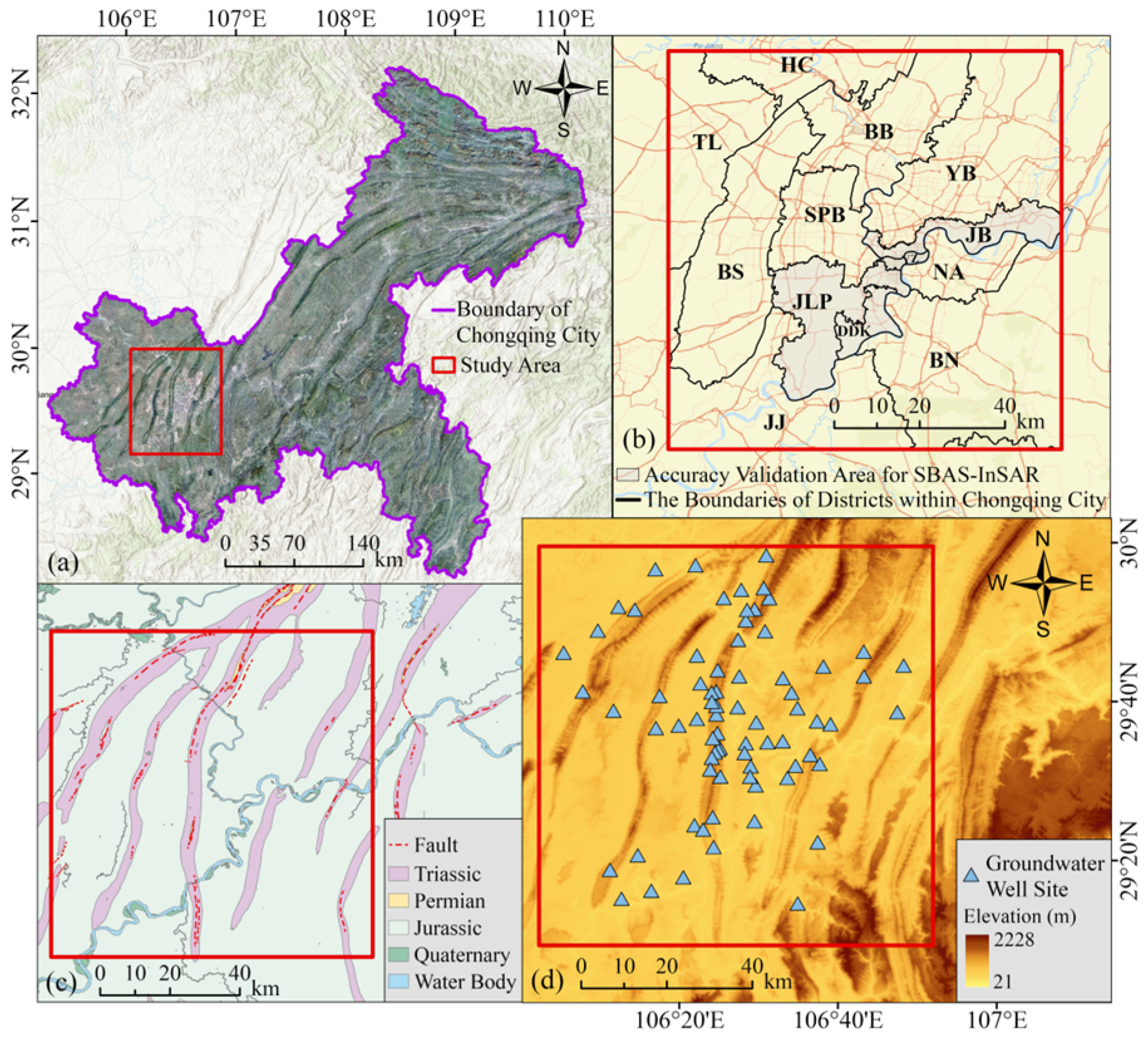
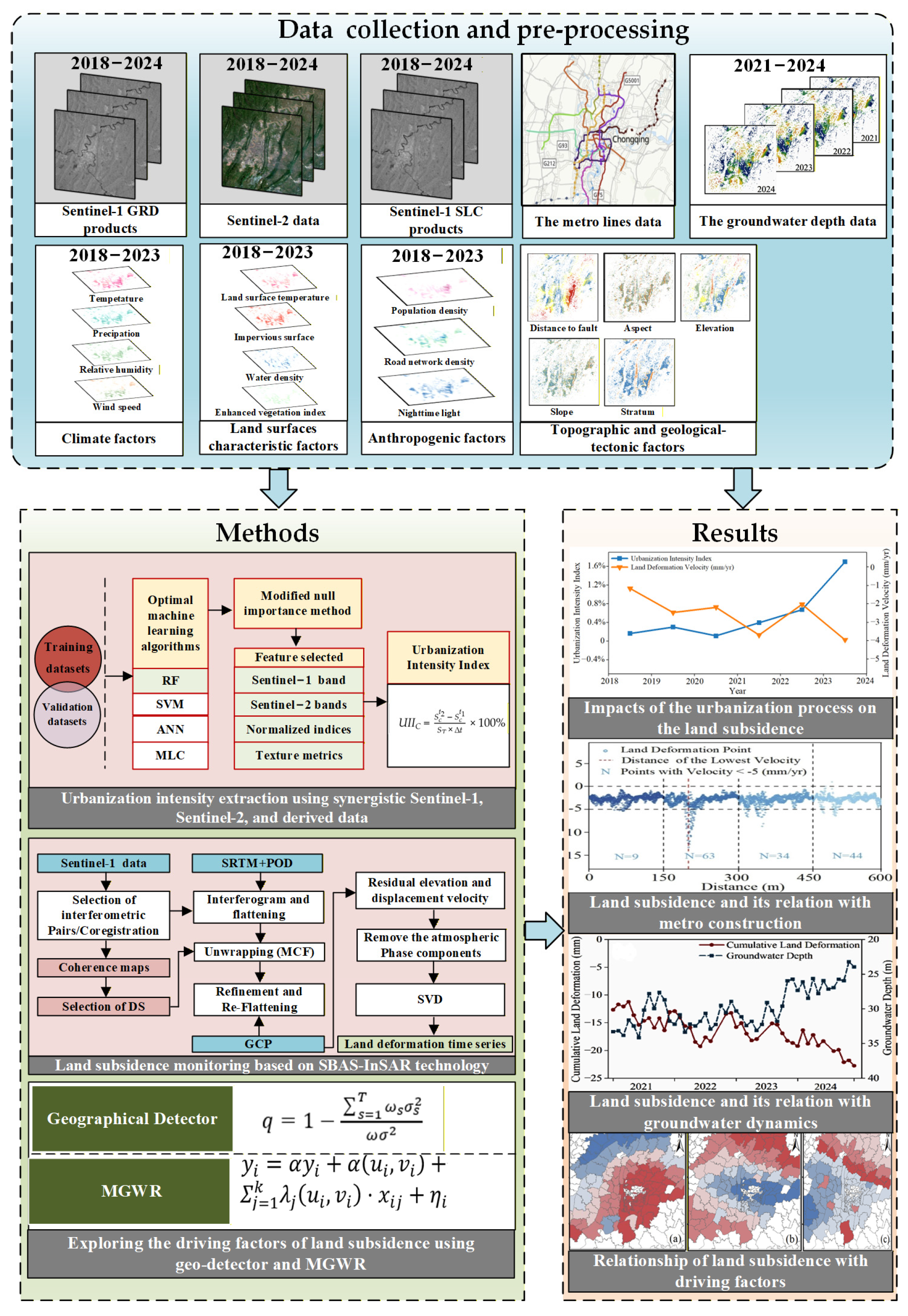
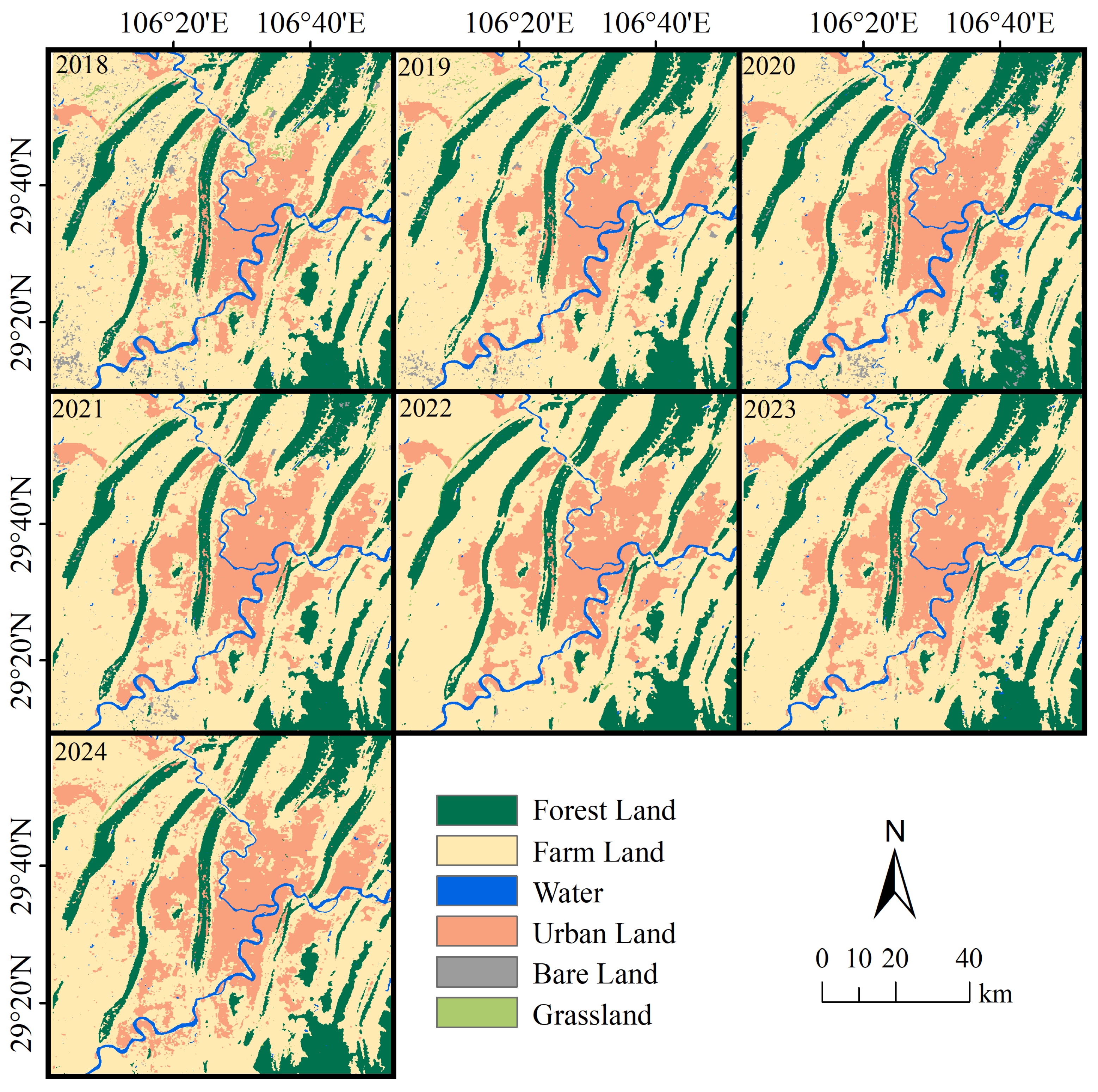

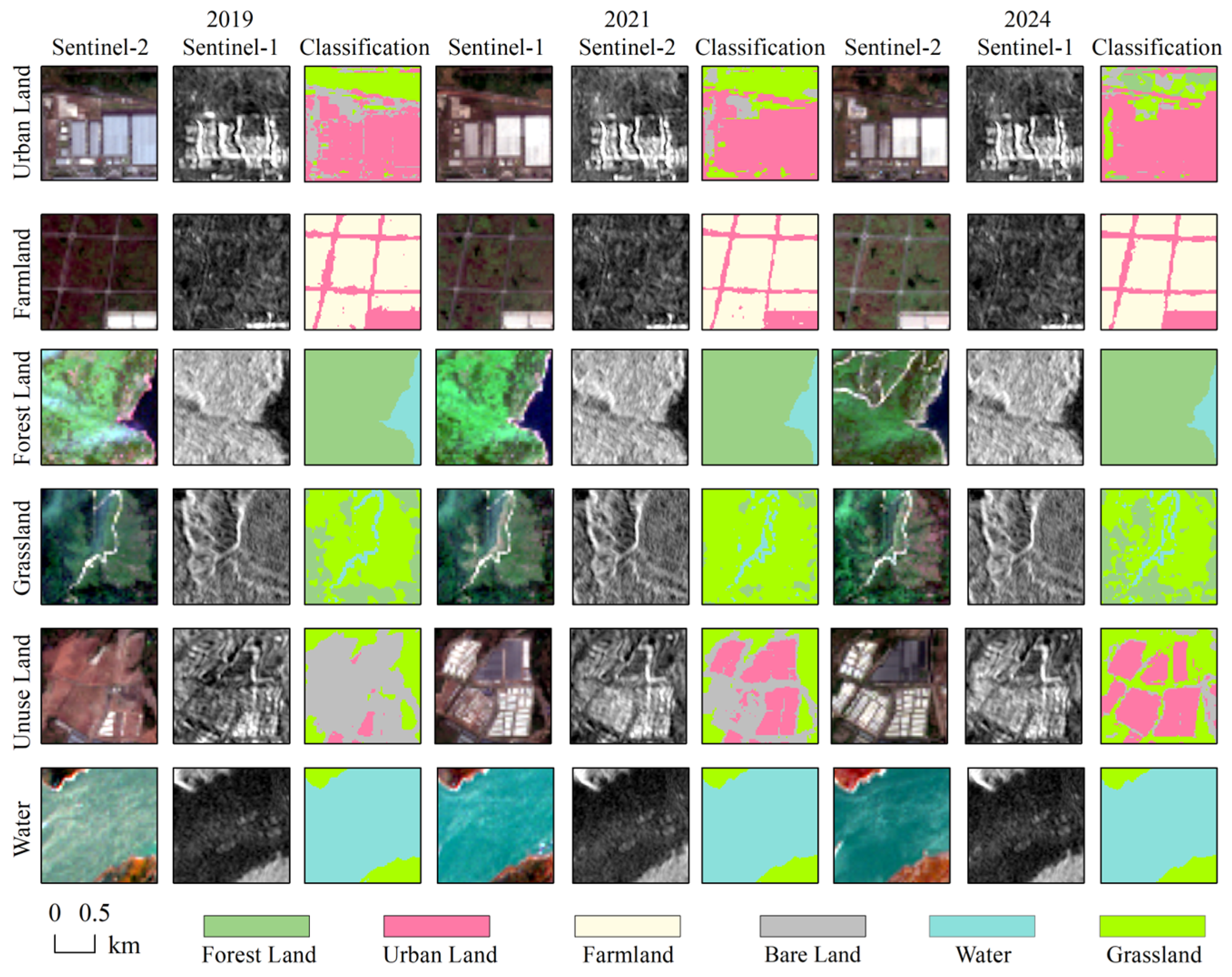
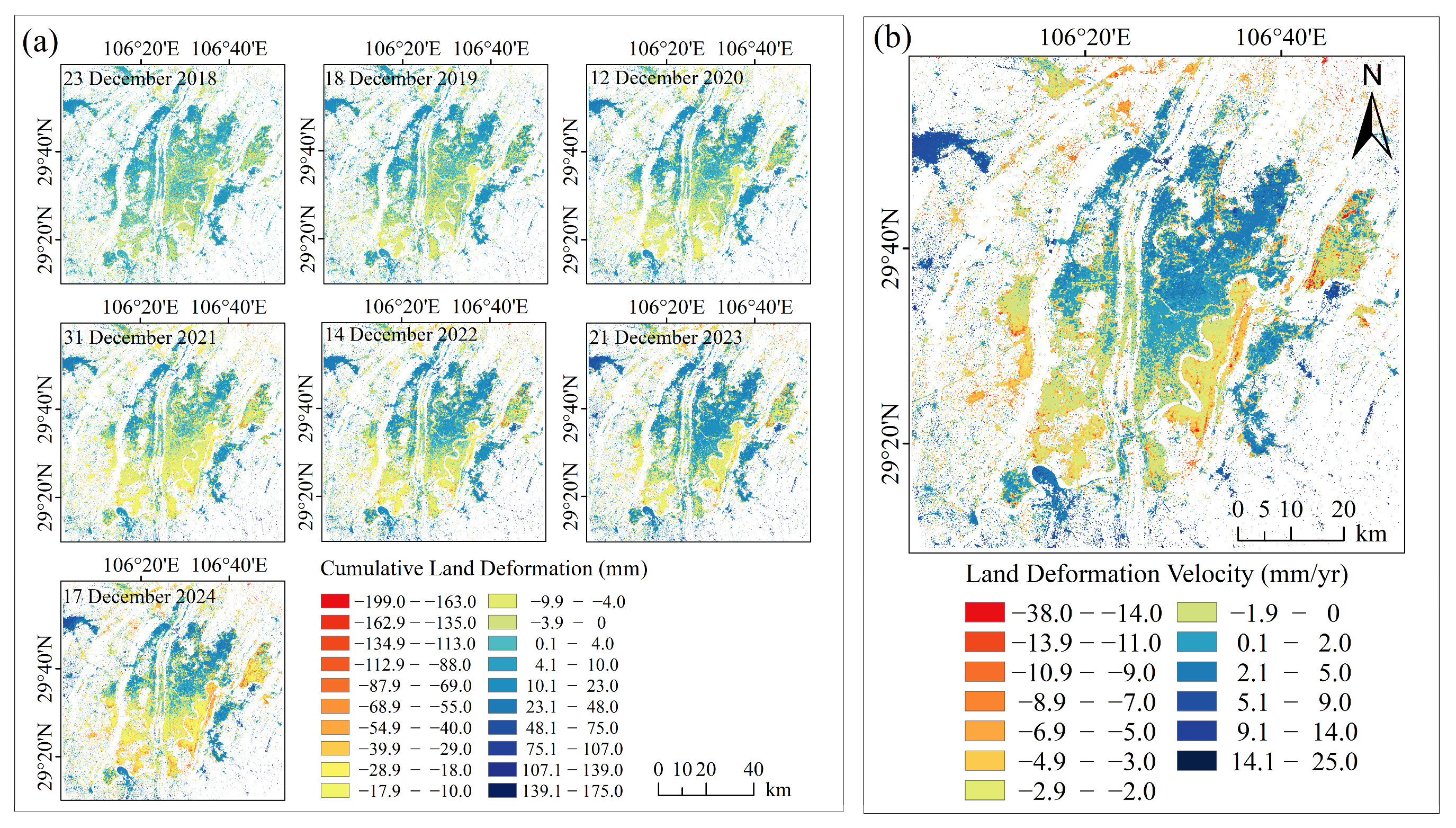
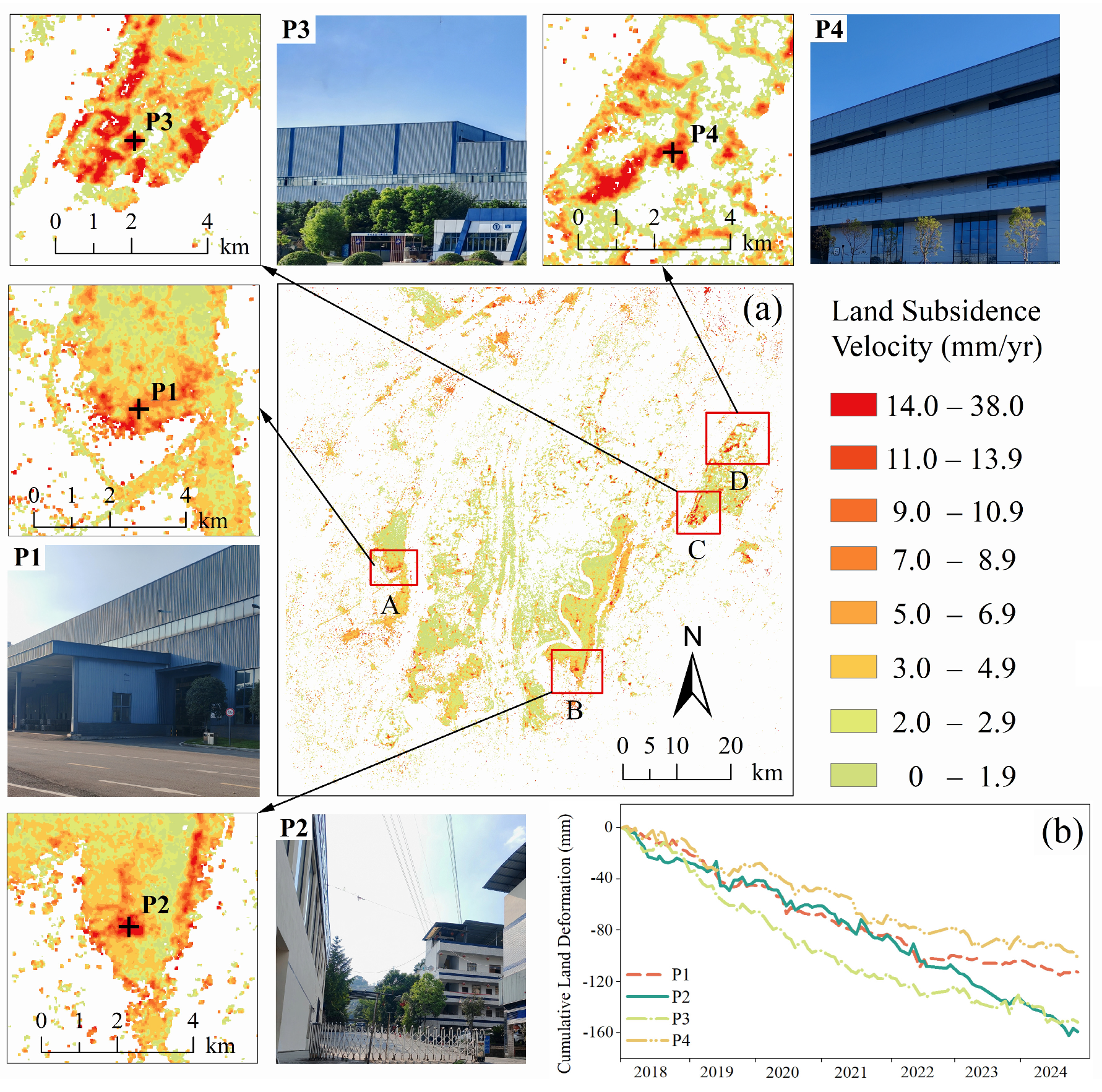
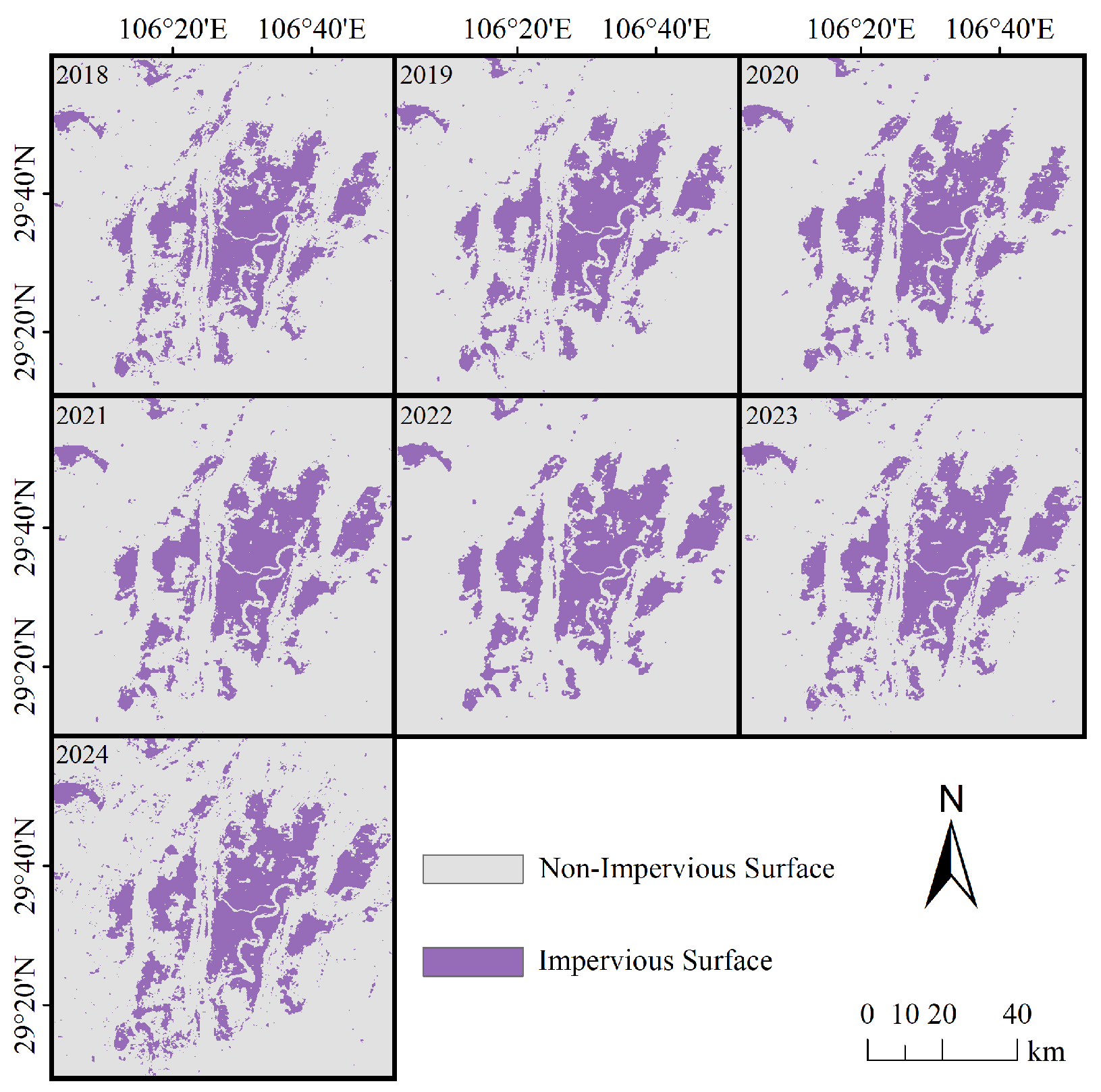
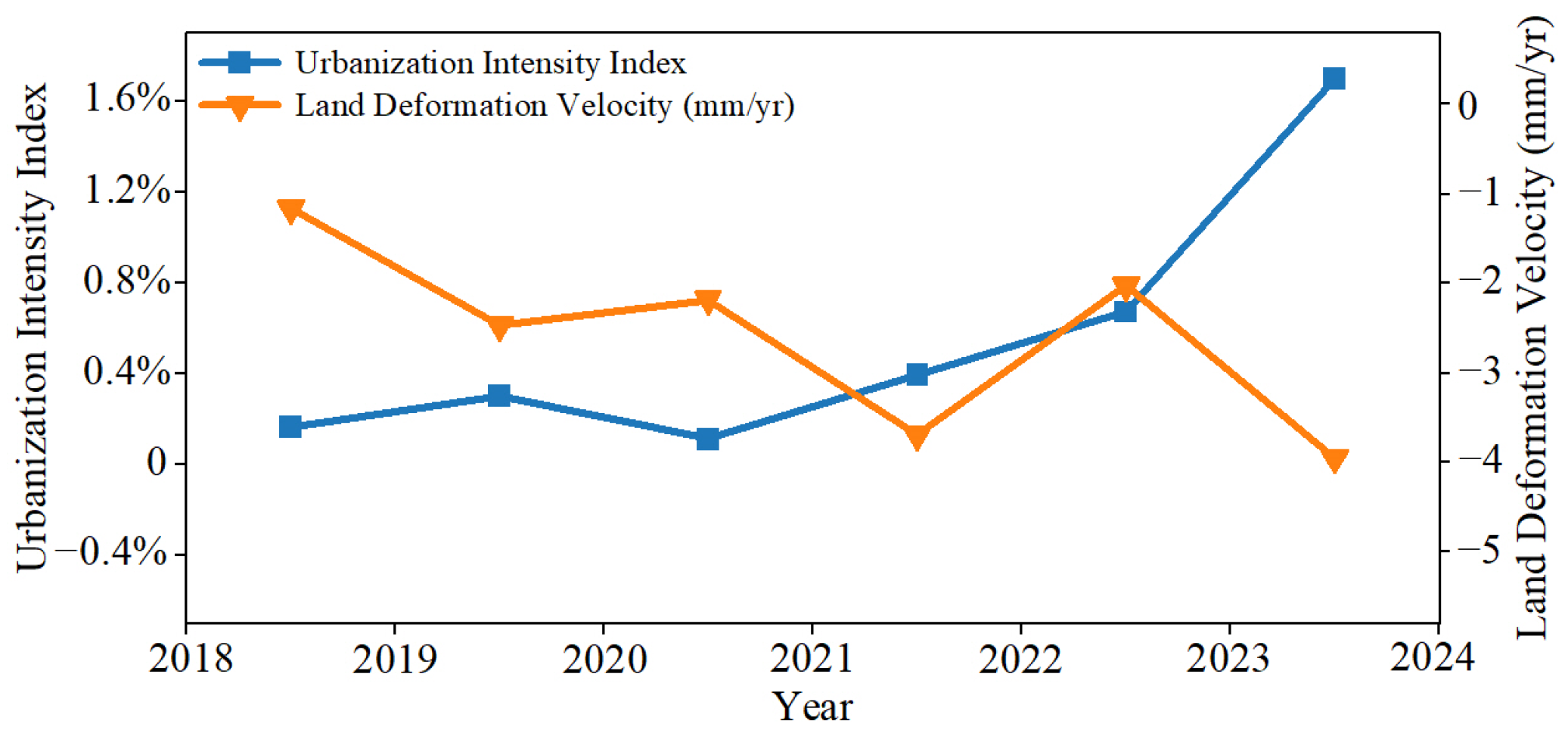
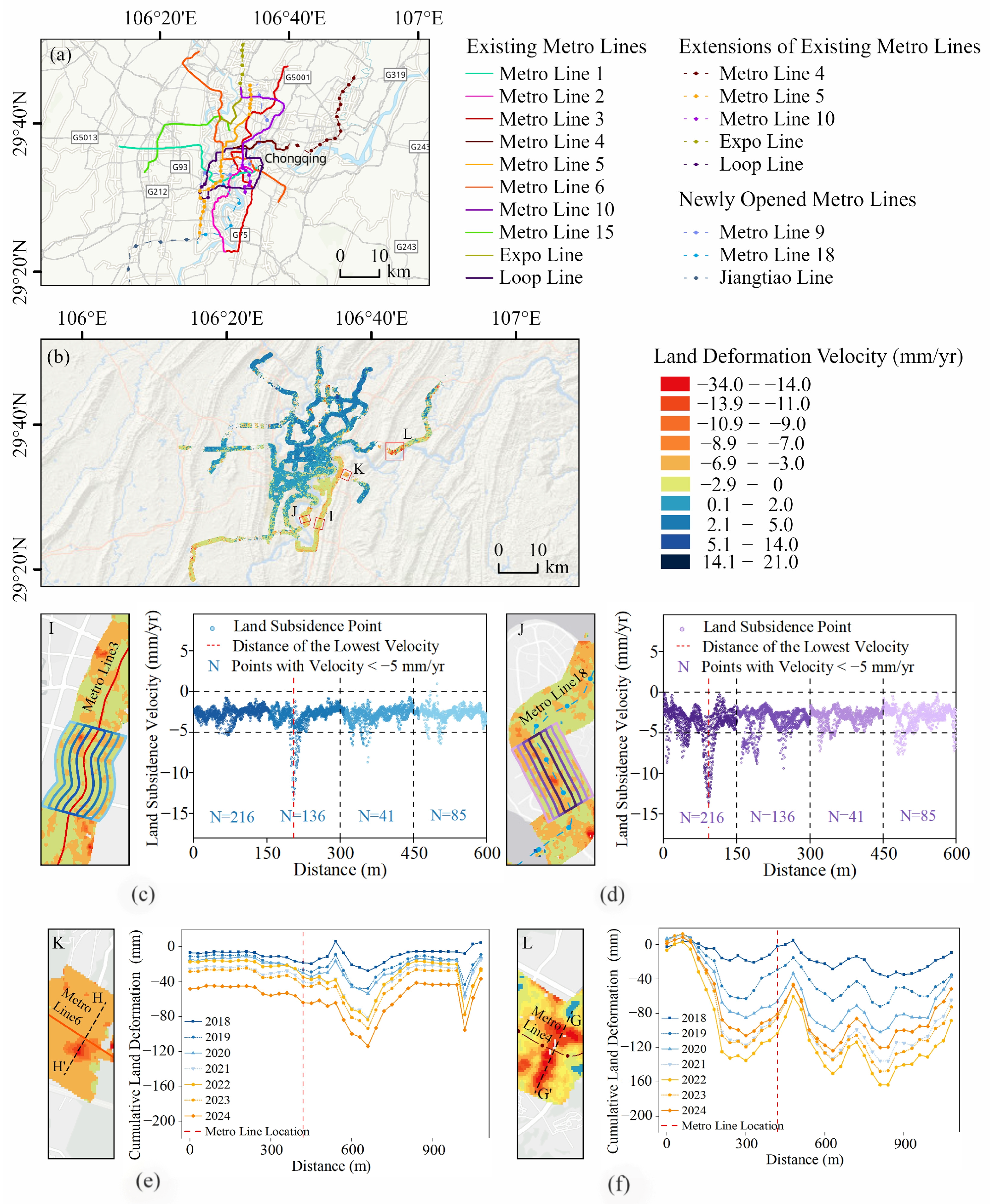
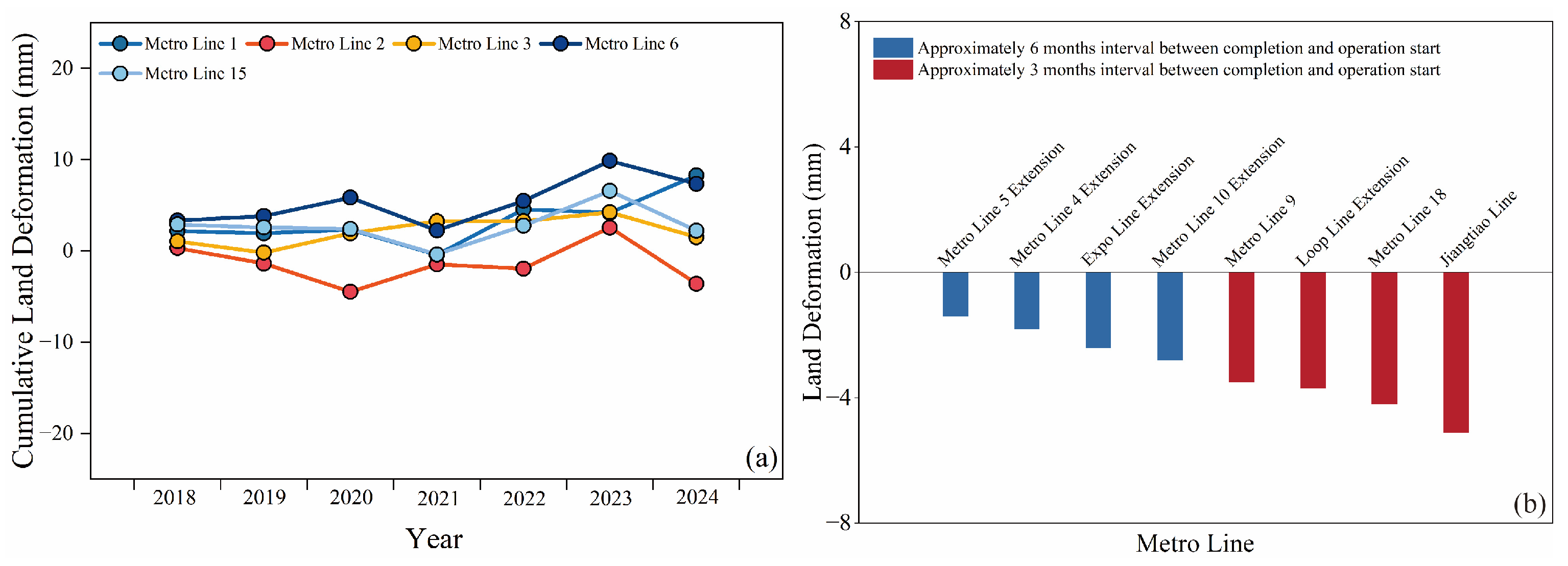


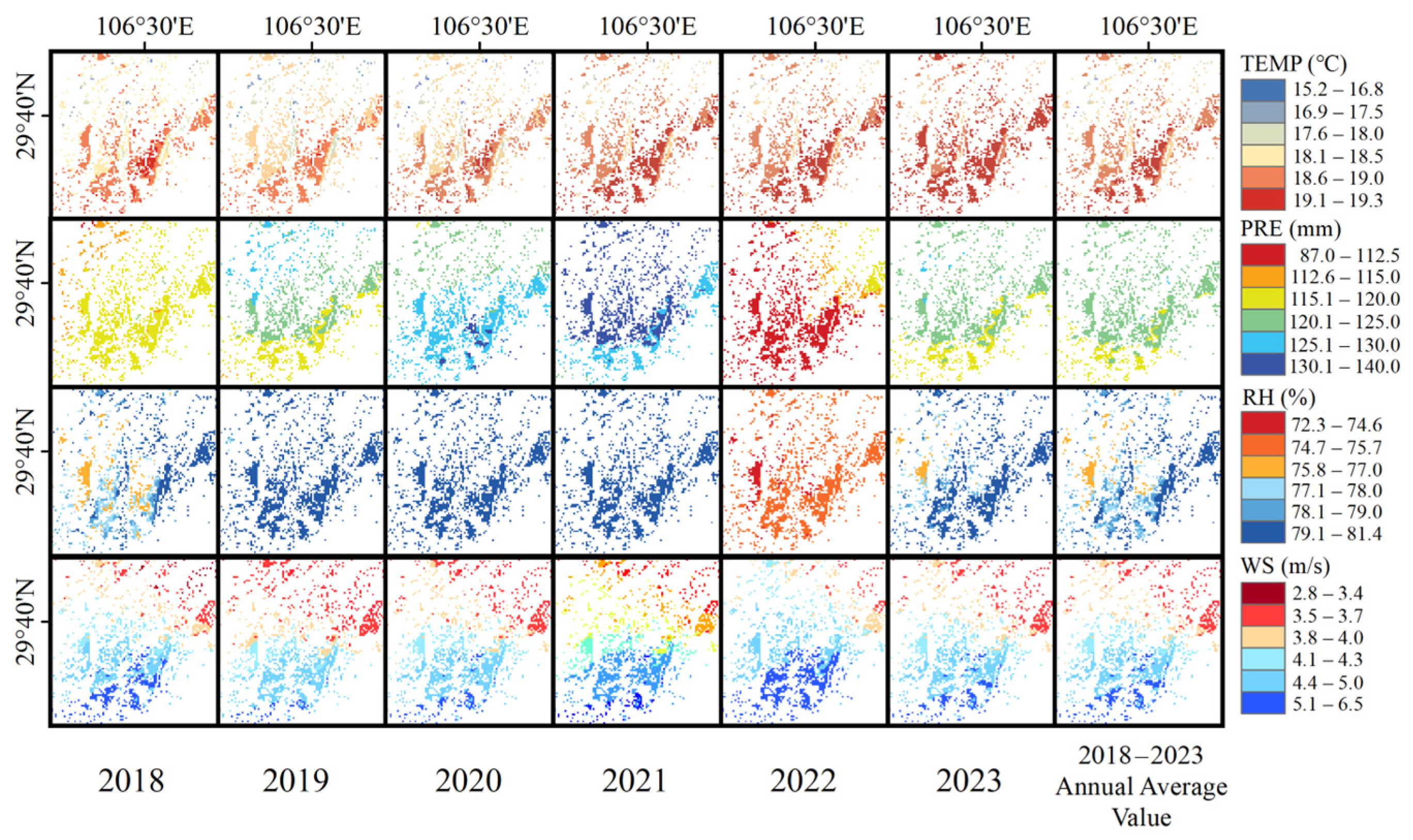

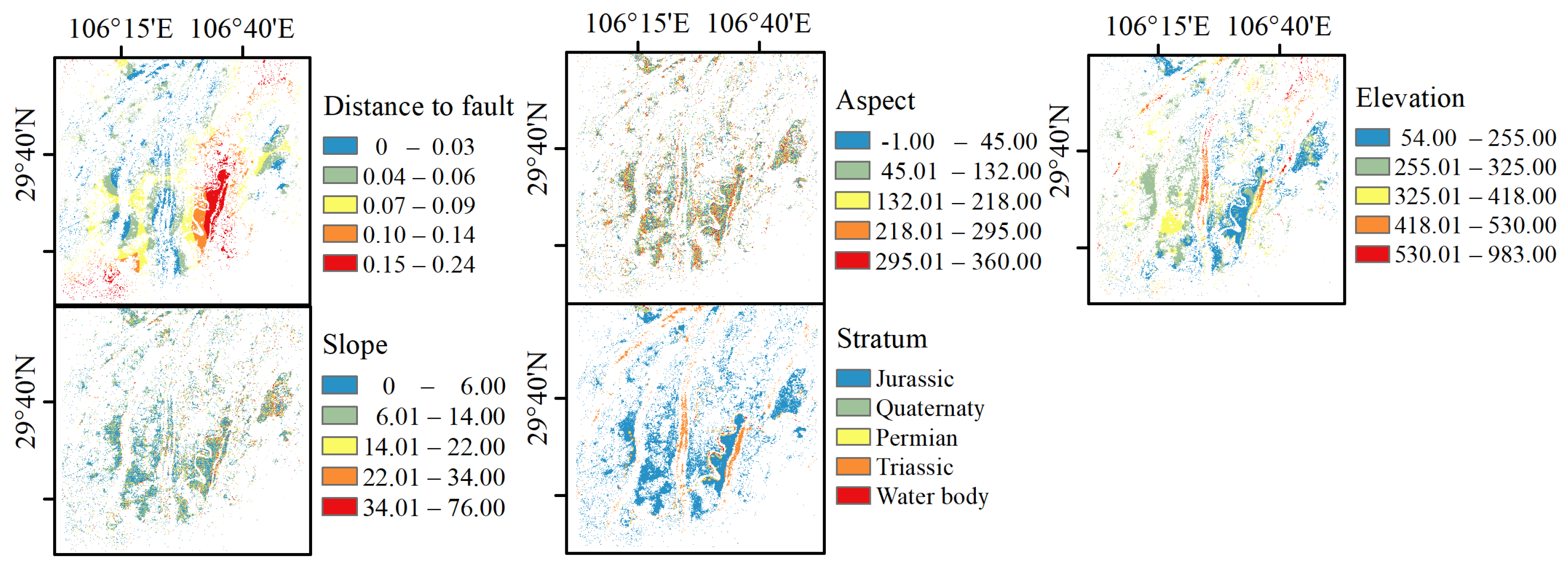
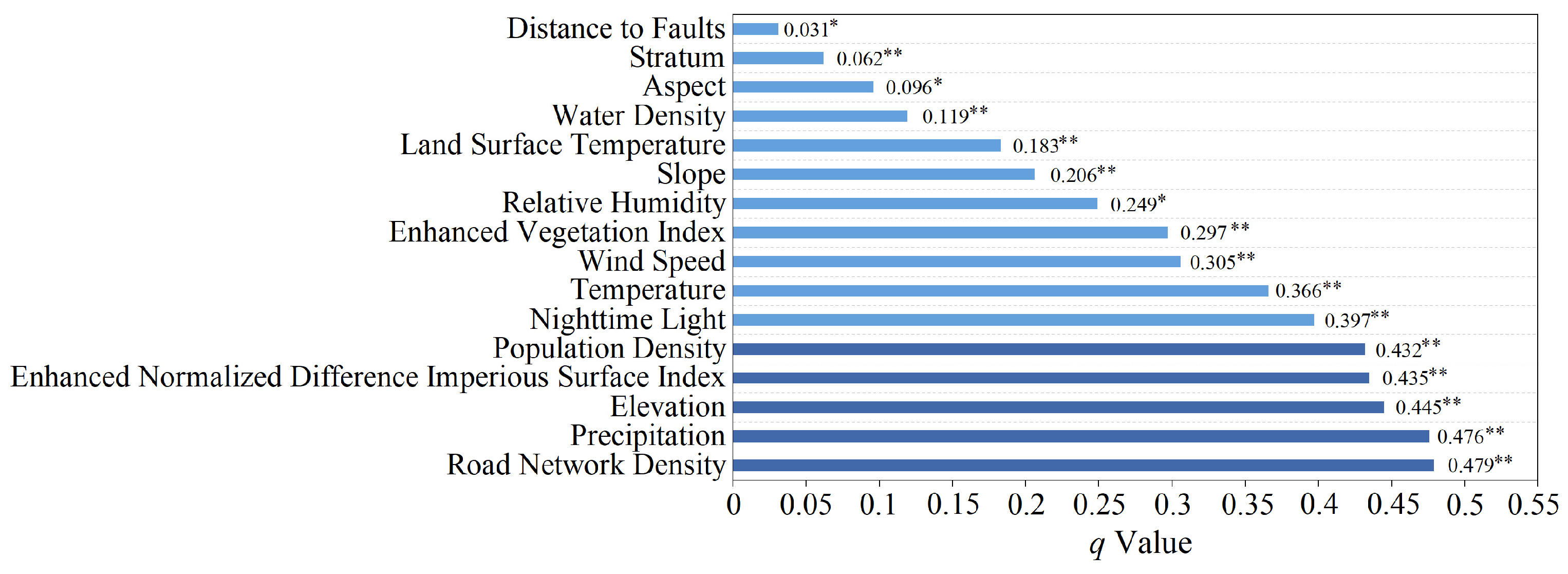
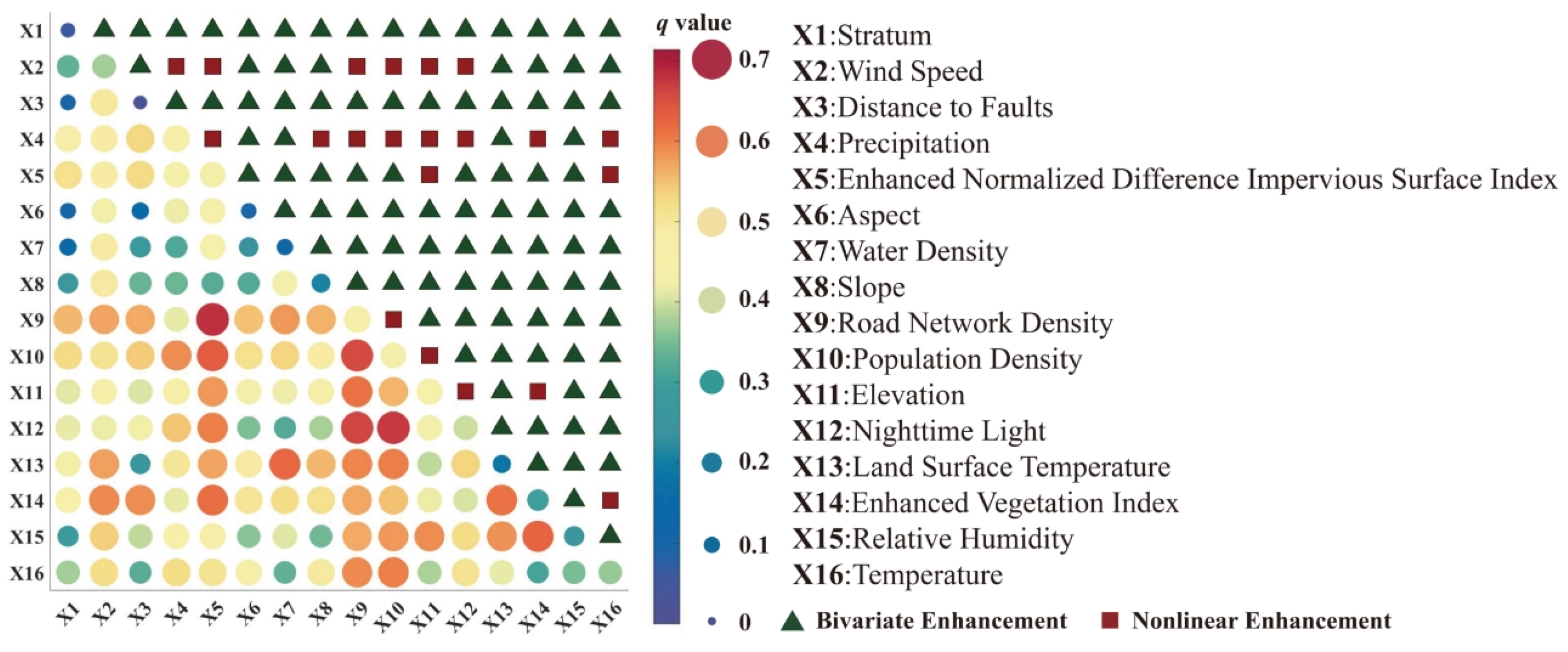
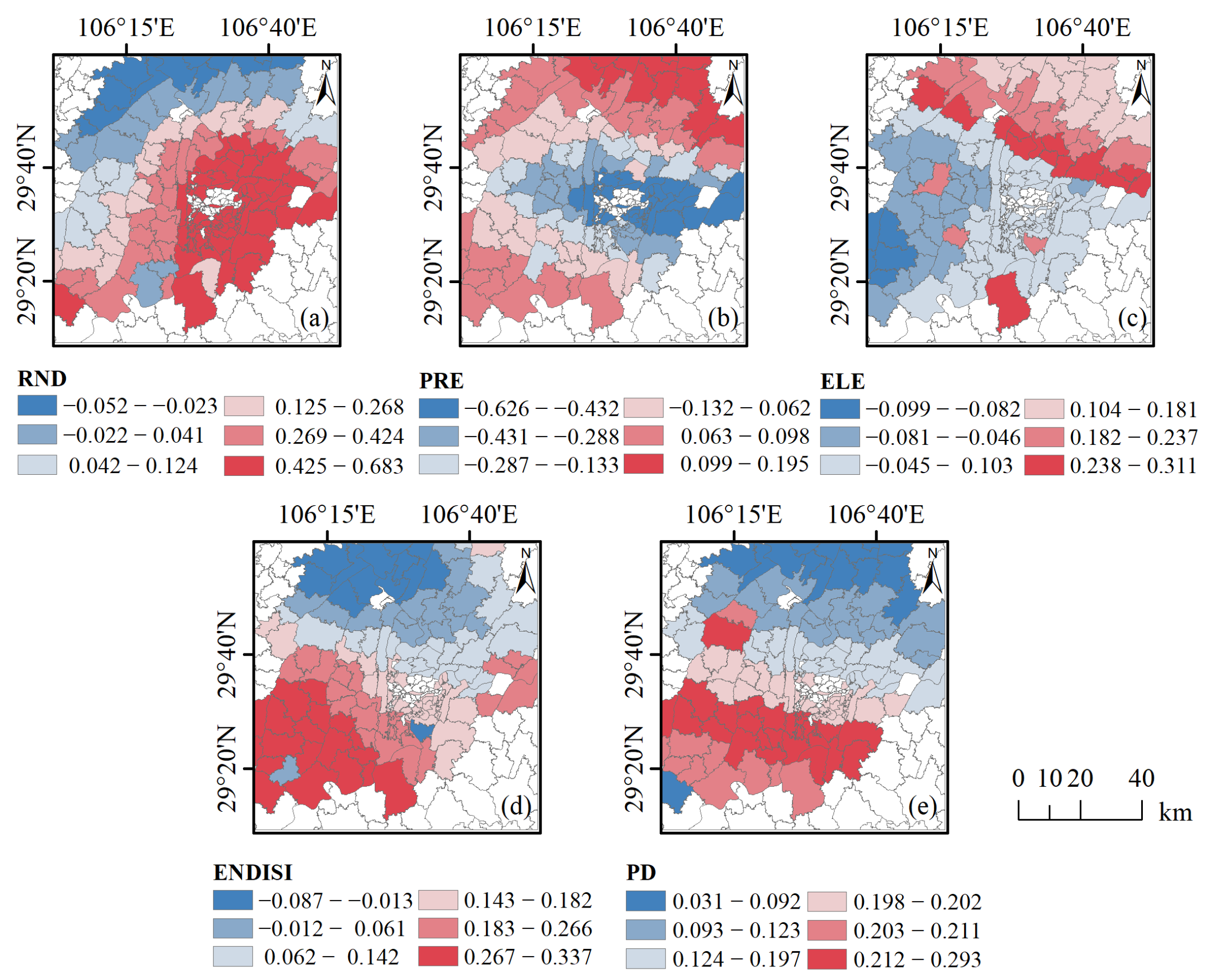
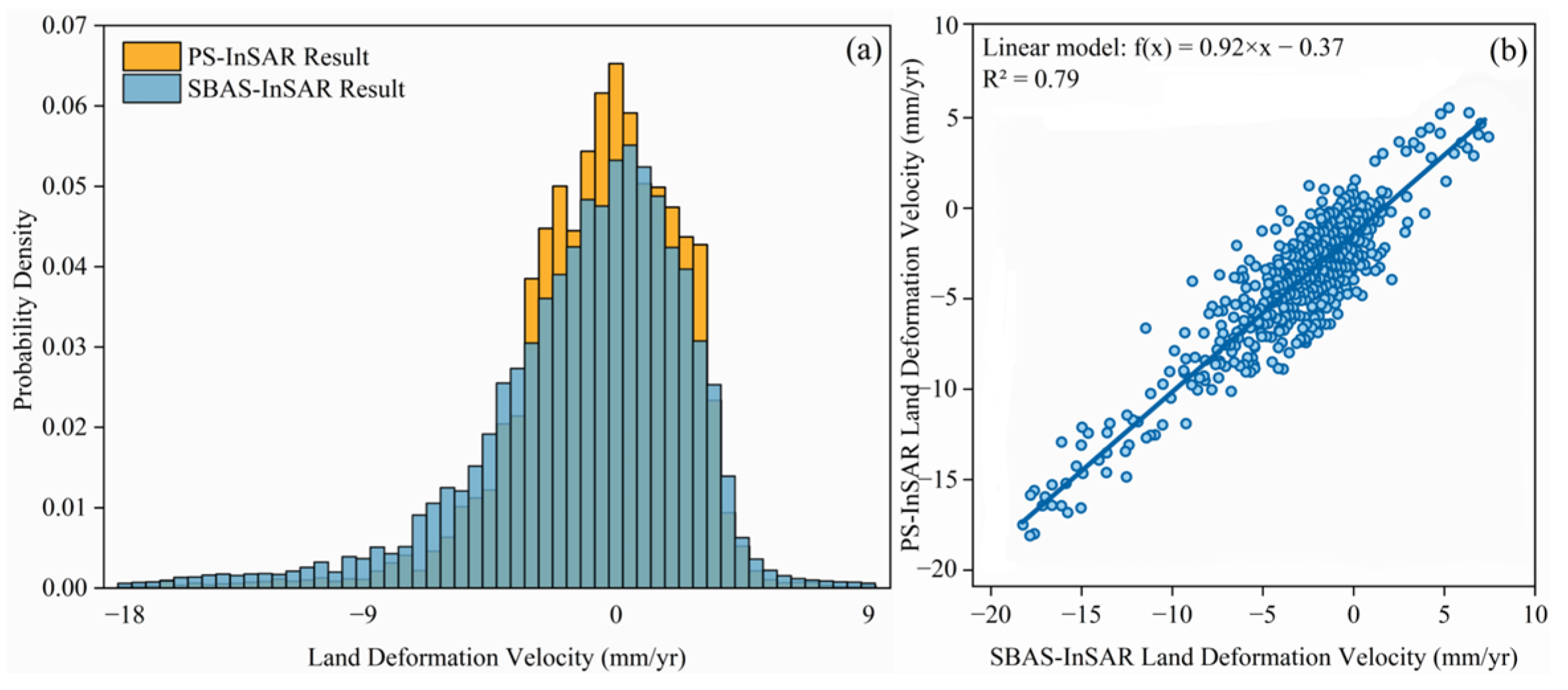
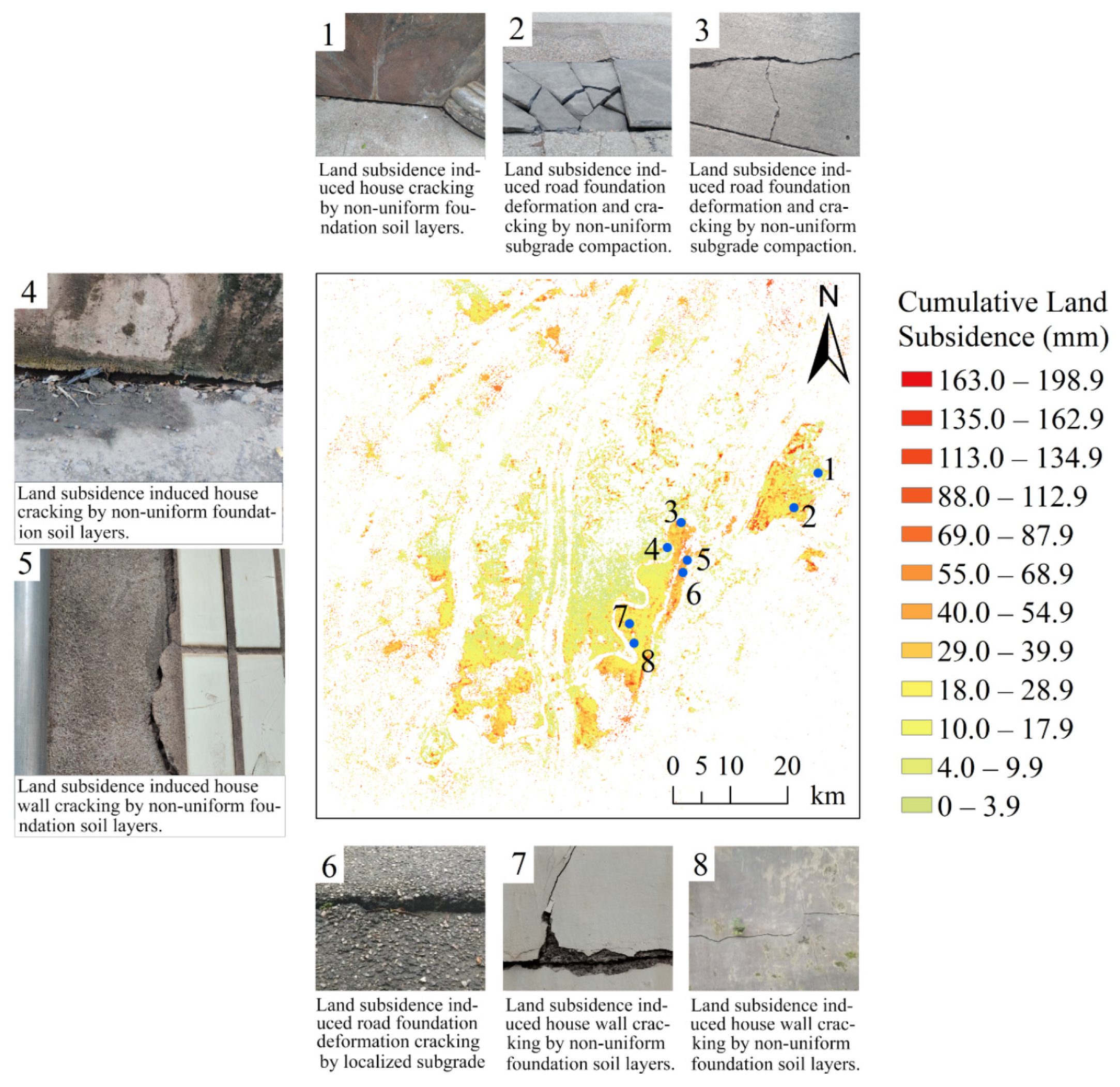
| Satellite | Product Type | Variables | Spatial Resolution/ Pixel Size | Temporal Resolution | Acquisition Dates |
|---|---|---|---|---|---|
| Sentinel-1A | ground range detected products | VV polarization, VH polarization | 20 × 22 m/10 × 10 m | 12 days | 25 August 2018, 20 August 2019, 26 August 2020, 9 August 2021; 4 August 2022; 23 August 2023; 29 August 2024 |
| single look complex products | VV polarization | 2.7 × 22 m–3.5 × 22 m/ 2.3 × 14.1 m | 12 days | 9 January 2018 to 27 December 2024 (103 Images) | |
| Sentinel-2 | Level-2A | Band02, Band03, Band04, Band05, Band06, Band07, Band08, Band08a, Band11, Band12 | 10 m (Band02, Band03, Band04, Band08); 20 m (Band05, Band06, Band07, Band08a, Band11, Band12) | 5 days | 27 August 2018; 17 August 2019; 26 August 2020; 1 August 2021; 11 August 2022; 16 August 2023; 25 August 2024 |
| Type | Factor | Source | Description | Spatial/ Temporal Resolution | Time Span |
|---|---|---|---|---|---|
| Anthropogenic factors | Nighttime lights (NTL) | https://dataverse.harvard.edu/, accessed on 3 January 2025 | NTL data were derived from the global NPP-VIIRS-like nighttime light dataset with a spatial resolution of 500 m. It clearly reflects the intensity and temporal changes in nighttime lights [44,45]. | 500 m/ yearly | 2018–2023 |
| Population density (PD) | https://landscan.ornl.gov/, accessed on 12 January 2025 | Population data are from LandScan, developed by Oak Ridge National Laboratory [46]. PD is calculated by dividing the total population by land area and reflects how people are distributed in space [47]. | 1000 m/ yearly | 2018–2023 | |
| Road network density (RND) | https://www.openstreetmap.org/, accessed on 12 January 2025 | Road data comes from OpenStreetMap, an open-source mapping community. RND is computed as the road length divided by the regional area. It reflects the scale and capacity of the urban road network [48,49]. | 1000 m/ yearly | 2018–2023 | |
| Topographic and geological-tectonic factors | Elevation (ELE) | https://earthdata.nasa.gov/, accessed on 13 January 2025 | ELE comes from the Digital Elevation Model data of the Shuttle Radar Topography Mission conducted by the National Aeronautics and Space Administration in 2000. Based on this, slope and aspect data were generated. They describe the terrain features of the study area [50,51]. | 30 m | 2015 |
| Aspect | |||||
| Slope | |||||
| Distance to faults (DF) | https://www.ngac.cn/ , accessed on 18 January 2025 | Geological map data come from the National Geological Archives of China. Faults and stratum information were extracted. Stratum refers to geological layers representing different geological periods. The stratum data were rasterized, and the Euclidean distance to faults was calculated. These data characterize the fundamental geological conditions of the study area [52,53]. | 1000 m | 2014 | |
| Stratum | |||||
| Climate factors | Temperature (TEMP) | https://data.tpdc.ac.cn/, accessed on 9 January 2025 | TEMP and PRE data come from the National Tibetan Plateau Data Center. The data were downscaled using the Delta method, integrating the 0.5° global climate dataset from Climatic Research Unit with the high-resolution dataset provided by WorldClim. The dataset has been carefully validated to reliably reflect the spatial and temporal patterns of temperature and precipitation [54,55]. | 1000 m/monthly | 2018–2023 |
| Precipitation (PRE) | |||||
| Relative humidity (RH) | https://cds.climate.copernicus.eu/, accessed on 9 January 2025 | RH and WS were derived from the ERA5-Land reanalysis dataset provided by the European Center for Medium-Range Weather Forecasts. Monthly mean values were generated by downscaling ERA5-Land data to a 1 km spatial resolution using the Delta method [56]. RH indicates how close the water vapor in the air is to saturation. WS is a direct measure of wind strength. | 0.25°/ hourly | 2018–2023 | |
| Wind speed (WS) | |||||
| Land surfaces characteristic factors | Land surface temperature (LST) | https://earthdata.nasa.gov/, accessed on 6 January 2025 | LST comes from the MOD11A2 product by the United States Geological Survey [57,58]. LST reflects the temperature variation in the land surface. | 1000 m/ 8 days | 2018–2023 |
| Impervious surface (IS) | https://browser.dataspace.copernicus.eu/, accessed on 6 January 2025 | IS quantifies the proportion of built-up land area modified by human activities. It was acquired by the Enhanced Normalized Difference Impervious Surface Index (ENDISI) was calculated using [59,60]: where B2, B4, B8, B11, and B12 denote the blue, red, near-infrared, shortwave infrared 1, and shortwave infrared 2 bands of Sentinel-2 imagery, respectively. | 20 m/ 27 August 2018; 17 August 2019; 26 August 2020; 1 August 2021; 11 August 2022; 16 August 2023; 25 August 2024 | 2018–2023 | |
| Water density (WD) | https://www.openstreetmap.org/, accessed on 18 January 2025 | Waterbody data come from OpenStreetMap [61], an open source mapping community. WD is calculated by dividing the total length of water bodies by the area of each region. It reflects the distribution of water bodies in the area. | 1000 m/ yearly | 2018–2023 | |
| Enhanced vegetation index (EVI) | https://search.earthdata.nasa.gov/, accessed on 9 January 2025 | EVI is extracted from the MOD13A3 product [62,63]. It is used for analyzing vegetation greenness over time and space on a global scale. | 1000 m/ monthly | 2018–2023 |
| Dataset | Variables |
|---|---|
| Original bands | S1-VV polarization, S1-VH polarization, S2-Band02, S2-Band03, S2-Band04, S2-Band05, S2-Band06, S2-Band07, S2-Band08, S2-Band08a, S2-Band11, S2-Band12 |
| Synthetic Aperture Radar (SAR) and spectral indices features | Dual Polarization SAR Vegetation Index (DPSVI) |
| Normalized Difference Vegetation Index (NDVI) | |
| Normalized Difference Vegetation Index red-edge 1 (NDVIre1) | |
| Soil Adjusted Vegetation Index (SAVI) | |
| Modified Normalized Difference Water Index (MNDWI) | |
| Bare Soil Index (BSI) | |
| The Normalized Difference Built-up Index (NDBI) | |
| Texture features | Mean-VV, Mean-VH, Variance-VV, Variance-VH, Homogeneity-VV, Homogeneity-VH, Contrast-VV, Contrast-VH, Dissimilarity-VV, Dissimilarity-VH, Entropy-VV, Entropy-VH, Angular Second Moment-VV, Angular Second Moment-VH, Correlation-VV, Correlation-VH |
| Land Cover Type | Training Data | Validation Data | Classification Criteria |
|---|---|---|---|
| Forest land | 1201 | 514 | Forest, shrub, etc. |
| Farmland | 798 | 342 | Cropland: planted and unplanted. |
| Water | 863 | 370 | Lakes, rivers, reservoirs, etc. |
| Urban land | 1632 | 700 | Urban buildings, concrete roads, etc. |
| Bare land | 931 | 399 | Sites under construction, etc. |
| Grassland | 827 | 354 | Natural, artificial, and other grassland. |
| Interaction Relationship | Type of Interaction |
|---|---|
| Two-factor enhancement | |
| Nonlinear enhancement | |
| Independent | |
| Nonlinear weakening | |
| Single-factor nonlinear weakening |
| Land Cover Types | Random Forest | Support Vector Machine | Artificial Neural Network | Maximum Likelihood Classification | ||||||||
|---|---|---|---|---|---|---|---|---|---|---|---|---|
| OA (0.88) K (0.88) | OA (0.86) K (0.81) | OA (0.83) K (0.80) | OA (0.76) K (0.72) | |||||||||
| UA | PA | K | UA | PA | K | UA | PA | K | UA | PA | K | |
| 1 | 0.96 | 0.97 | 0.95 | 0.93 | 0.94 | 0.92 | 0.91 | 0.92 | 0.89 | 0.88 | 0.89 | 0.86 |
| 2 | 0.90 | 0.92 | 0.91 | 0.86 | 0.88 | 0.87 | 0.83 | 0.85 | 0.84 | 0.80 | 0.82 | 0.79 |
| 3 | 1.00 | 0.97 | 0.97 | 0.96 | 0.93 | 0.93 | 0.93 | 0.90 | 0.90 | 0.90 | 0.87 | 0.87 |
| 4 | 0.83 | 0.79 | 0.77 | 0.82 | 0.73 | 0.71 | 0.78 | 0.69 | 0.67 | 0.74 | 0.65 | 0.62 |
| 5 | 0.73 | 0.77 | 0.75 | 0.68 | 0.71 | 0.69 | 0.64 | 0.67 | 0.65 | 0.60 | 0.63 | 0.60 |
| 6 | 0.92 | 0.84 | 0.82 | 0.87 | 0.79 | 0.77 | 0.83 | 0.75 | 0.73 | 0.79 | 0.71 | 0.69 |
| Feature Extraction Dataset | Overall Accuracy | Kappa Index |
|---|---|---|
| Original bands | 0.88 | 0.87 |
| SAR and spectral indices features | 0.91 | 0.89 |
| Texture features | 0.77 | 0.74 |
| Original bands + SAR and spectral indices features | 0.91 | 0.90 |
| SAR and spectral indices features + Texture features | 0.79 | 0.79 |
| Original bands + SAR and spectral indices features + Texture features | 0.85 | 0.83 |
| Feature selection results | 0.95 | 0.94 |
| Land Cover Types | 2018 | 2019 | 2020 | 2021 | 2022 | 2023 | 2024 | |||||||
|---|---|---|---|---|---|---|---|---|---|---|---|---|---|---|
| ISA | Non | ISA | Non | ISA | Non | ISA | Non | ISA | Non | ISA | Non | ISA | Non | |
| ISA | 653 | 47 | 655 | 45 | 645 | 55 | 640 | 60 | 620 | 80 | 620 | 80 | 610 | 90 |
| Non | 50 | 1929 | 48 | 1931 | 40 | 1939 | 35 | 1944 | 30 | 1949 | 25 | 1954 | 20 | 1959 |
| OA = 0.96 Kappa = 0.91 | OA = 0.96 Kappa = 0.91 | OA = 0.95 Kappa = 0.90 | OA = 0.97 Kappa = 0.92 | OA = 0.94 Kappa = 0.90 | OA = 0.97 Kappa = 0.92 | OA = 0.97 Kappa = 0.93 | ||||||||
| Land Subsidence Velocity (mm/yr) | Low 0~10 | Relatively Low 10~30 | High 30~40 | Total |
|---|---|---|---|---|
| Number of monitoring points | 2,787,493 | 113,759 | 352 | 2,901,644 |
| Percentage | 96.07% | 3.92% | 0.01% | 100% |
Disclaimer/Publisher’s Note: The statements, opinions and data contained in all publications are solely those of the individual author(s) and contributor(s) and not of MDPI and/or the editor(s). MDPI and/or the editor(s) disclaim responsibility for any injury to people or property resulting from any ideas, methods, instructions or products referred to in the content. |
© 2025 by the authors. Licensee MDPI, Basel, Switzerland. This article is an open access article distributed under the terms and conditions of the Creative Commons Attribution (CC BY) license (https://creativecommons.org/licenses/by/4.0/).
Share and Cite
Li, Y.; Yao, Y.; Deng, Y.; Ren, J.; Dai, K. Analysis of Land Subsidence During Rapid Urbanization in Chongqing, China: Impacts of Metro Construction, Groundwater Dynamics, and Natural–Anthropogenic Environment Interactions. Remote Sens. 2025, 17, 3539. https://doi.org/10.3390/rs17213539
Li Y, Yao Y, Deng Y, Ren J, Dai K. Analysis of Land Subsidence During Rapid Urbanization in Chongqing, China: Impacts of Metro Construction, Groundwater Dynamics, and Natural–Anthropogenic Environment Interactions. Remote Sensing. 2025; 17(21):3539. https://doi.org/10.3390/rs17213539
Chicago/Turabian StyleLi, Yuanfeng, Yuan Yao, Yice Deng, Jiazheng Ren, and Keren Dai. 2025. "Analysis of Land Subsidence During Rapid Urbanization in Chongqing, China: Impacts of Metro Construction, Groundwater Dynamics, and Natural–Anthropogenic Environment Interactions" Remote Sensing 17, no. 21: 3539. https://doi.org/10.3390/rs17213539
APA StyleLi, Y., Yao, Y., Deng, Y., Ren, J., & Dai, K. (2025). Analysis of Land Subsidence During Rapid Urbanization in Chongqing, China: Impacts of Metro Construction, Groundwater Dynamics, and Natural–Anthropogenic Environment Interactions. Remote Sensing, 17(21), 3539. https://doi.org/10.3390/rs17213539






